A traditional North American rotary telephone dial. The associative lettering was originally used for dialing named exchanges but was kept because it facilitated memorization of telephone numbers.
A rotary dial is a component of a telephone or a telephone switchboard that implements a signaling technology in telecommunications known as pulse dialing. It is used when initiating a telephone call to transmit the destination telephone number to a telephone exchange.
On the rotary dial, the digits are arranged in a circular layout, with one finger hole in the finger wheel for each digit. For dialing a digit, the wheel is rotated against spring tension with one finger positioned in the corresponding hole, pulling the wheel with the finger to a stop position given by a mechanical barrier, the finger stop. When released at the finger stop, the wheel returns to its home position driven by the spring at a speed regulated by a governor device. During this return rotation, an electrical switch interrupts the direct current (DC) of the telephone line (local loop) the specific number of times associated with each digit and thereby generates electrical pulses which the telephone exchange decodes into each dialed digit. Thus, each of the ten digits is encoded in sequences to correspond to the number of pulses; thus, the method is sometimes called decadic dialing.
The first patent for a rotary dial was granted to Almon Brown Strowger on November 29, 1892, but the commonly known form with holes in the finger wheel was not introduced until about 1904.[citation needed] While used in telephone systems of the independent telephone companies, rotary dial service in the Bell System in the United States was not common until the early 1920s.[1]
From the 1960s onward, the rotary dial was gradually supplanted by DTMF (dual-tone multi-frequency) push-button dialing, first introduced to the public at the 1962 World’s Fair under the trade name «Touch-Tone». Touch-tone technology primarily used a keypad in the form of a rectangular array of push-buttons. Although no longer in common use, the rotary dial’s legacy remains in the verb «to dial (a telephone number)».
History[edit]
The LM Ericsson Dialog from the 1960s that remained popular in Sweden and Finland up until the 1980s
Swedish rotary telephone. The 0 precedes 1.
From as early as 1836 onward, various suggestions and inventions of dials for sending telegraph signals were reported. After the first commercial telephone exchange was installed in 1878, the need for an automated, user-controlled method of directing a telephone call became apparent. Addressing the technical shortcomings, Almon Brown Strowger invented a telephone dial in 1891.[2] Before 1891, numerous competing inventions, and 26 patents for dials, push-buttons, and similar mechanisms, specified methods of signalling a destination telephone station that a subscriber wanted to call. Most inventions involved costly, intricate mechanisms and required the user to perform complex manipulations.[citation needed]
The first commercial installation of a telephone dial accompanied the first commercial installation of a 99-line automatic telephone exchange in La Porte, Indiana, in 1892, which was based on the 1891 Strowger designs. The original dials required complex operational sequences. A workable, albeit error-prone, system was invented by the Automatic Electric Company using three push-buttons on the telephone. These buttons represented the hundreds, tens, and single units of a telephone number. When calling the subscriber number 163, for example, the user had to push the hundreds button once, followed by six presses of the tens button, and three presses of the units button.[3] In 1896, this system was supplanted by an automatic contact-making machine, or calling device. Further development continued during the 1890s and the early 1900s in conjunction with improvements in switching technology.
Almon Brown Strowger was the first to file a patent for a rotary dial on December 21, 1891, which was awarded on November 29, 1892, as U.S. Patent 486,909.[4][5] The early rotary dials used lugs on a finger plate instead of holes, and did not produce a linear sequence of pulses, but interrupted two independent circuits for control of relays in the exchange switch. The pulse train was generated without the control of spring action or a governor on the forward movement of the wheel, which proved to be difficult to operate correctly.
Despite their lack of modern features, rotary dials occasionally find special uses, particularly in industrial equipment. For instance, the anti-drug Fairlawn Coalition of the Anacostia section of Washington, D.C., persuaded the phone company to reinstall rotary-dial pay phones in the 1980s to discourage loitering by drug purchasers, since they lacked a telephone keypad to leave messages on dealers’ pagers.[6] They are also retained for authenticity in historic properties such as the U.S. Route 66 Blue Swallow Motel, which date back to the era of named exchanges and pulse dialing.[7]
Function[edit]
To dial a number, the user inserts a finger into the corresponding finger hole and rotates the dial clockwise until it reaches the finger stop. The user then pulls out the finger, and a spring in the dial returns the wheel to the resting position. During the period of return, the dial operates electrical contacts that break the line current to the exchange a different number of times for each digit on the dial.
The number of pulses sent for each digit depends on the type of dial system used, which have traditionally varied by country, or by the manufacturer of the telephone system. For example, Sweden uses one pulse to signal the number zero, and ten pulses to signal the number nine. In Finland, where many phones were of Swedish manufacture, one pulse signaled number 1, and ten pulses number zero. New Zealand used ten pulses minus the number desired; so dialing the digit 7 produces three pulses. In Norway, the North American system with the number 1 corresponding to one pulse was used, except for the capital, Oslo, which used the same «inverse» system as in New Zealand. The sequencing of the digits on the dial varies accordingly.
Rotary dials have no redial feature; the entire number must be dialed for every attempted call. Additionally, the time it took to dial a number depended on how far the dial had to travel to return to the resting position. A phone number that had digits that required larger numbers of pulses could be tedious to use, by comparison.
Construction[edit]
A 1931 Ericsson rotary dial telephone without lettering on the finger wheel, typical of European telephones. The 0 precedes 1.
A rotary dial typically features a circular construction. The shaft that actuates the mechanical switching mechanism is driven by the finger wheel, a disk that has ten finger holes aligned close to the circumference. The finger wheel may be transparent or opaque permitting the viewing of the face plate, or number plate below, either in whole, or only showing the number assignment for each finger hole. The faceplate is printed with numbers, and sometimes letters, corresponding to each finger hole. The 1 is normally set at approximately 60 degrees clockwise from the uppermost point of the dial, or approximately at the 2 o’clock position, and then the numbers progress counterclockwise, with the 0 being at about 5 o’clock.[citation needed] A curved device called a finger stop sits above the dial at approximately the 4 o’clock position. The physical nature of the dialing mechanism on rotary phones allowed the use of physical locking mechanisms to prevent unauthorized use. The lock could be integral to the phone itself or a separate device inserted through the finger hole nearest the finger stop to prevent the dial from rotating.
Principal dial mechanisms in the United States[edit]
In the United States, two principal dial mechanisms arose in the development labs of the largest manufacturers, Western Electric for the Bell System, and the Automatic Electric Company.
The Western Electric dial had spur gears to power the governor, so the governor and dial shafts were parallel.
The Automatic Electric governor shaft was parallel to the plane of the dial. Its shaft had worm gearing in which, very atypically, the gear drove the worm. The worm, highly polished, had extreme pitch, its teeth at about 45° to its axis. This was the same as the gearing for the speed-limiting fan in traditional music boxes.
The Western Electric governor was a cup surrounding spring-loaded pivoted weights with friction pads. The Automatic Electric governor had weights on the middles of curved springs made from strip stock. When it speeded up after the dial was released, the weights moved outward, pulling the ends of their springs together. Springs were fixed to a collar on the shaft at one end, and to the hub of a sliding brake disc at the other end. At speed, the brake disc contacted a friction pad. This governor was similar to that in spring-driven windup phonograph turntables of the early 20th century.
Both types had wrap-spring clutches for driving their governors. When winding the dial-return spring, these clutches disconnected to let the dial turn quickly. When the dial was released, the clutch spring wrapped tightly to drive the governor.
While winding the dial, a spring-centered pawl in the Western Electric dial wiggled off-center when driven by the cam on the dial shaft. Teeth on that cam were spaced apart by the same angle as dial hole spacing. During winding, the pawl moved off-center away from the normally-closed pulsing contacts. When the dial was released, the cam teeth moved the pawl the other way to open and release the dial contacts.
In the Automatic Electric dial, the pulsing cam and governor were driven by a wrap-spring clutch as the dial returned. When winding, that clutch disconnected both cam and governor.
Recoil spring[edit]
The back of a rotary dial in operation, with LEDs attached making the contacts’ states visible
Early dials worked by direct or forward action. The pulses were generated as the dial turned toward the finger stop position. When the user’s hand motion was erratic, it produced the wrong numbers. In the late 19th century, the dial was refined to operate automatically by a recoil spring. The user selected the digit to be dialed, rotated the dial to the finger stop, then released it. The spring caused the dial to rotate back to its home position during which time constant speed was maintained with a centrifugal governor.
Dials at user stations typically produced pulses at the rate of ten pulses per second (pps), while dials on operator consoles on Crossbar or electronic exchanges often pulsed at 20 pps.
The rotary dial governor is subject to wear and aging, and may require periodic cleaning, lubrication and adjustment by a telephone technician. In the video, the green LED shows the dial impulse pulses and the red LED shows the dial’s off-normal contact function.
Off-normal contacts typically serve two additional functions. They may implement a shunt across the transmitter circuit and induction coil to maximize the pulsing signal of the dial by eliminating all internal impedances of the telephone set. Another function is to short-circuit the telephone receiver during dialing, to prevent audible clicking noise from being heard by the telephone user.
Dials located in handsets[edit]
A 220 Trimline rotary desk phone, showing the innovative rotary dial with moving fingerstop
Some telephones include a small dial built into the handset, with a movable finger stop. The user rotates the dial clockwise until the finger stop ceases moving, then releases both. In this design the holes extend around the full circumference of the dial, allowing a reduced diameter. This was introduced by Western Electric on the compact Trimline telephone, the first to locate the dial in the handset. In Spain, such phones were manufactured for CTNE (Compañía Telefónica Nacional de España) by Málaga-based factory «CITESA», being named as «Góndola» phones by its particular shape. Spanish Góndola sets were fitted from the beginning with a red LED series connected with the line, allowing the dial («disco» in Spanish) to be backlit while dialling. For that, the LED was bridged by an anti-parallel Zener diode, to allow the DC to pass even if the line polarity were reversed. In case of line polarity reversal, the LED would not light, but the phone would work anyway. The LED and Zener diode were contained in the same package for ease of assembly in manufacturing.
Britain[edit]
Phone with letters on its rotary dial (1950s, UK)
In the United Kingdom the letter «O» was combined with the digit «0» rather than «6». In large cities the seven-digit numbers comprised three letters for the exchange name, followed by four numbers.
Australia[edit]

Australian phones had ten letters for the exchange code
Before 1960 Australian rotary dial telephones had each number’s corresponding letter printed on a paper disc in the centre of the plate, with space where the subscriber could add the phone number. The paper was protected by a clear plastic disc, held in place by a form of retaining ring which also served to locate the disc radially. The Australian letter-to-number mapping was A=1, B=2, F=3, J=4, L=5, M=6, U=7, W=8, X=9, Y=0, so the phone number BX 3701 was in fact 29 3701. When Australia around 1960 changed to all-numeric telephone dials, a mnemonic to help people associate letters with numbers was the sentence, «All Big Fish Jump Like Mad Under Water eXcept Yabbies.»
Eastern bloc[edit]
Alphabetic designation of exchanges with Cyrillic letters (А, Б, В, Г, Д, Е, Ж, И, К, Л for each of the digits from 1 through 0 respectively) was also used for a short period in the Soviet Union in the 1950s and 1960s, but by the next decade this practice was largely discontinued.[8][9]
However, such letter codes were not used in all countries.

Rotary telephone from New Zealand, which used a reversed ordering of the numerals
Emergency calling[edit]
A relic of these differences is found in emergency telephone numbers used in various countries; the United Kingdom selected 999 due to the ease of converting call office dials to make free calls. «0» for the Operator was already free, and the cam that removed the shunt on the line when the dial was rotated to the «0» position could be altered to include the adjacent digit «9» (and «8» if required) so that calls to «0» and «999» could be made without inserting coins. In New Zealand, 111 was selected because New Zealand reverse-numbered dials make each digit «1» send 9 pulses to the central office/telephone exchange (like «9» in Britain), allowing British exchange equipment to be used off the shelf.
Alphanumeric dialing[edit]
In addition to the ten digits, the faceplate is often printed with letters corresponding to each position.
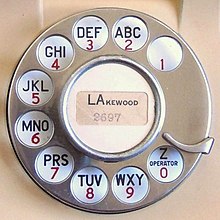
Face of a 1939 rotary dial showing the telephone number LA-2697, which includes the first two letters of Lakewood, New Jersey
In North America, traditional dials have letter codes displayed with the numbers under the finger holes in the following pattern: 1, 2 ABC, 3 DEF, 4 GHI, 5 JKL, 6 MNO, 7 PRS, 8 TUV, 9 WXY, and 0 (sometimes Z) Operator. Letters were associated with the dial numbers to represent telephone exchange names in communities that required multiple central offices. For example, «RE7-3456» represented «REgent 7-3456».
In 1917, W. G. Blauvelt of AT&T developed the pattern of combination of letters to digits, that became the standard in North America. Large cities like New York would ultimately require a seven-digit number, but some tests in the early 1900s indicated that the short-term memory span of many people could not handle seven digits and many dialing errors due to memory lapse might occur (the documentation for these tests is lost).[citation needed] As large cities would have both manual and automatic exchanges for some years, the numbers for manual or automatic exchanges would have the same format (originally MULberry 3456, with three letters then four numbers), which could be either spoken or dialed. [10]
In the late 1940s, telephones were redesigned with the numbers and letters displayed on a ring outside the finger wheel to provide better visibility.[11]
Push-button pulse dialing[edit]
Even after the transition to DTMF dialing with push-button keypads in most areas, pulse-dialing telephones continued to be produced for some time, even with keypads for dialing, for use with certain private exchange systems.[12][failed verification] Some of these can be distinguished visually by the lack of keys with the symbols # and *. Some telephones may have an option to select pulse dialing or DTMF dialing.
See also[edit]
- AIOD leads (automatic identified outward dialing)
- Crossbar switch
- Dial tone
- Direct distance dialing (DDD)
- History of the telephone
- Single-frequency signaling
- Stepping switch
- Title 47 CFR Part 68
References[edit]
- ^ Roberts, William Lee. «A look at the evolution of the Dial Telephone». Retrieved 15 January 2016.
- ^ Fiber Optics Weekly Update. Information Gatekeepers Inc.
- ^ Smith, A. B.; Campbell, W. L., Automatic Telephony, New York, McGraw-Hill, 1921, p. 38.
- ^ Greenman, Catherine (October 7, 1999). «When Dials Were Round and Clicks Were Plentiful». The New York Times. Archived from the original on 2007-06-16 – via oldphones.com.
- ^ «Automatic Telephone or Other Electrical Exchange». United States Patent and Trademark Office.
- ^ Benson, Bruce L. (1998). «Private Justice in America». To Serve and Protect: Privatization and Community in Criminal Justice. pp. 123–124. ISBN 0-8147-1327-0.
- ^ John Flinn (October 5, 2012). «Route 66 still has some kicks». San Francisco Chronicle. Retrieved 2012-10-08.
- ^ History of Moscow City Telephone Network Archived 2014-07-09 at archive.today (in Russian)
- ^ A short history of telephone numbers, includes a copy of the 1968 flyer about abolishing letters in Moscow telephone numbers from the museum of Moscow City Telephone Network
- ^ A History of Engineering and Science in the Bell System: The Early Years (1875-1925) p578 by M. D. Fagen (editor) & Bell Labs technical staff (1975, Bell Telephone Laboratories)
- ^ Vanderbilt, Tom (2012-05-15). «Hello?». Slate. ISSN 1091-2339. Retrieved 2017-02-04.
- ^ «TELEPHONE No. 728». www.britishtelephones.com. Retrieved May 6, 2017.
External links[edit]
- «The Invention and Development of the Dial Telphone: The Contribution of Three Lindsborg Inventors» by Emory Lindquist; Spring 1957 issue of The Kansas Historical Quarterly
- «How Your Dial Phone Works», Popular Science, August 1946—detailed article on subject with illustrations
- AT&T Archives Director’s Cut — Now You Can Dial (YouTube), from the AT&T archives
A traditional North American rotary telephone dial. The associative lettering was originally used for dialing named exchanges but was kept because it facilitated memorization of telephone numbers.
A rotary dial is a component of a telephone or a telephone switchboard that implements a signaling technology in telecommunications known as pulse dialing. It is used when initiating a telephone call to transmit the destination telephone number to a telephone exchange.
On the rotary dial, the digits are arranged in a circular layout, with one finger hole in the finger wheel for each digit. For dialing a digit, the wheel is rotated against spring tension with one finger positioned in the corresponding hole, pulling the wheel with the finger to a stop position given by a mechanical barrier, the finger stop. When released at the finger stop, the wheel returns to its home position driven by the spring at a speed regulated by a governor device. During this return rotation, an electrical switch interrupts the direct current (DC) of the telephone line (local loop) the specific number of times associated with each digit and thereby generates electrical pulses which the telephone exchange decodes into each dialed digit. Thus, each of the ten digits is encoded in sequences to correspond to the number of pulses; thus, the method is sometimes called decadic dialing.
The first patent for a rotary dial was granted to Almon Brown Strowger on November 29, 1892, but the commonly known form with holes in the finger wheel was not introduced until about 1904.[citation needed] While used in telephone systems of the independent telephone companies, rotary dial service in the Bell System in the United States was not common until the early 1920s.[1]
From the 1960s onward, the rotary dial was gradually supplanted by DTMF (dual-tone multi-frequency) push-button dialing, first introduced to the public at the 1962 World’s Fair under the trade name «Touch-Tone». Touch-tone technology primarily used a keypad in the form of a rectangular array of push-buttons. Although no longer in common use, the rotary dial’s legacy remains in the verb «to dial (a telephone number)».
History[edit]
The LM Ericsson Dialog from the 1960s that remained popular in Sweden and Finland up until the 1980s
Swedish rotary telephone. The 0 precedes 1.
From as early as 1836 onward, various suggestions and inventions of dials for sending telegraph signals were reported. After the first commercial telephone exchange was installed in 1878, the need for an automated, user-controlled method of directing a telephone call became apparent. Addressing the technical shortcomings, Almon Brown Strowger invented a telephone dial in 1891.[2] Before 1891, numerous competing inventions, and 26 patents for dials, push-buttons, and similar mechanisms, specified methods of signalling a destination telephone station that a subscriber wanted to call. Most inventions involved costly, intricate mechanisms and required the user to perform complex manipulations.[citation needed]
The first commercial installation of a telephone dial accompanied the first commercial installation of a 99-line automatic telephone exchange in La Porte, Indiana, in 1892, which was based on the 1891 Strowger designs. The original dials required complex operational sequences. A workable, albeit error-prone, system was invented by the Automatic Electric Company using three push-buttons on the telephone. These buttons represented the hundreds, tens, and single units of a telephone number. When calling the subscriber number 163, for example, the user had to push the hundreds button once, followed by six presses of the tens button, and three presses of the units button.[3] In 1896, this system was supplanted by an automatic contact-making machine, or calling device. Further development continued during the 1890s and the early 1900s in conjunction with improvements in switching technology.
Almon Brown Strowger was the first to file a patent for a rotary dial on December 21, 1891, which was awarded on November 29, 1892, as U.S. Patent 486,909.[4][5] The early rotary dials used lugs on a finger plate instead of holes, and did not produce a linear sequence of pulses, but interrupted two independent circuits for control of relays in the exchange switch. The pulse train was generated without the control of spring action or a governor on the forward movement of the wheel, which proved to be difficult to operate correctly.
Despite their lack of modern features, rotary dials occasionally find special uses, particularly in industrial equipment. For instance, the anti-drug Fairlawn Coalition of the Anacostia section of Washington, D.C., persuaded the phone company to reinstall rotary-dial pay phones in the 1980s to discourage loitering by drug purchasers, since they lacked a telephone keypad to leave messages on dealers’ pagers.[6] They are also retained for authenticity in historic properties such as the U.S. Route 66 Blue Swallow Motel, which date back to the era of named exchanges and pulse dialing.[7]
Function[edit]
To dial a number, the user inserts a finger into the corresponding finger hole and rotates the dial clockwise until it reaches the finger stop. The user then pulls out the finger, and a spring in the dial returns the wheel to the resting position. During the period of return, the dial operates electrical contacts that break the line current to the exchange a different number of times for each digit on the dial.
The number of pulses sent for each digit depends on the type of dial system used, which have traditionally varied by country, or by the manufacturer of the telephone system. For example, Sweden uses one pulse to signal the number zero, and ten pulses to signal the number nine. In Finland, where many phones were of Swedish manufacture, one pulse signaled number 1, and ten pulses number zero. New Zealand used ten pulses minus the number desired; so dialing the digit 7 produces three pulses. In Norway, the North American system with the number 1 corresponding to one pulse was used, except for the capital, Oslo, which used the same «inverse» system as in New Zealand. The sequencing of the digits on the dial varies accordingly.
Rotary dials have no redial feature; the entire number must be dialed for every attempted call. Additionally, the time it took to dial a number depended on how far the dial had to travel to return to the resting position. A phone number that had digits that required larger numbers of pulses could be tedious to use, by comparison.
Construction[edit]
A 1931 Ericsson rotary dial telephone without lettering on the finger wheel, typical of European telephones. The 0 precedes 1.
A rotary dial typically features a circular construction. The shaft that actuates the mechanical switching mechanism is driven by the finger wheel, a disk that has ten finger holes aligned close to the circumference. The finger wheel may be transparent or opaque permitting the viewing of the face plate, or number plate below, either in whole, or only showing the number assignment for each finger hole. The faceplate is printed with numbers, and sometimes letters, corresponding to each finger hole. The 1 is normally set at approximately 60 degrees clockwise from the uppermost point of the dial, or approximately at the 2 o’clock position, and then the numbers progress counterclockwise, with the 0 being at about 5 o’clock.[citation needed] A curved device called a finger stop sits above the dial at approximately the 4 o’clock position. The physical nature of the dialing mechanism on rotary phones allowed the use of physical locking mechanisms to prevent unauthorized use. The lock could be integral to the phone itself or a separate device inserted through the finger hole nearest the finger stop to prevent the dial from rotating.
Principal dial mechanisms in the United States[edit]
In the United States, two principal dial mechanisms arose in the development labs of the largest manufacturers, Western Electric for the Bell System, and the Automatic Electric Company.
The Western Electric dial had spur gears to power the governor, so the governor and dial shafts were parallel.
The Automatic Electric governor shaft was parallel to the plane of the dial. Its shaft had worm gearing in which, very atypically, the gear drove the worm. The worm, highly polished, had extreme pitch, its teeth at about 45° to its axis. This was the same as the gearing for the speed-limiting fan in traditional music boxes.
The Western Electric governor was a cup surrounding spring-loaded pivoted weights with friction pads. The Automatic Electric governor had weights on the middles of curved springs made from strip stock. When it speeded up after the dial was released, the weights moved outward, pulling the ends of their springs together. Springs were fixed to a collar on the shaft at one end, and to the hub of a sliding brake disc at the other end. At speed, the brake disc contacted a friction pad. This governor was similar to that in spring-driven windup phonograph turntables of the early 20th century.
Both types had wrap-spring clutches for driving their governors. When winding the dial-return spring, these clutches disconnected to let the dial turn quickly. When the dial was released, the clutch spring wrapped tightly to drive the governor.
While winding the dial, a spring-centered pawl in the Western Electric dial wiggled off-center when driven by the cam on the dial shaft. Teeth on that cam were spaced apart by the same angle as dial hole spacing. During winding, the pawl moved off-center away from the normally-closed pulsing contacts. When the dial was released, the cam teeth moved the pawl the other way to open and release the dial contacts.
In the Automatic Electric dial, the pulsing cam and governor were driven by a wrap-spring clutch as the dial returned. When winding, that clutch disconnected both cam and governor.
Recoil spring[edit]
The back of a rotary dial in operation, with LEDs attached making the contacts’ states visible
Early dials worked by direct or forward action. The pulses were generated as the dial turned toward the finger stop position. When the user’s hand motion was erratic, it produced the wrong numbers. In the late 19th century, the dial was refined to operate automatically by a recoil spring. The user selected the digit to be dialed, rotated the dial to the finger stop, then released it. The spring caused the dial to rotate back to its home position during which time constant speed was maintained with a centrifugal governor.
Dials at user stations typically produced pulses at the rate of ten pulses per second (pps), while dials on operator consoles on Crossbar or electronic exchanges often pulsed at 20 pps.
The rotary dial governor is subject to wear and aging, and may require periodic cleaning, lubrication and adjustment by a telephone technician. In the video, the green LED shows the dial impulse pulses and the red LED shows the dial’s off-normal contact function.
Off-normal contacts typically serve two additional functions. They may implement a shunt across the transmitter circuit and induction coil to maximize the pulsing signal of the dial by eliminating all internal impedances of the telephone set. Another function is to short-circuit the telephone receiver during dialing, to prevent audible clicking noise from being heard by the telephone user.
Dials located in handsets[edit]
A 220 Trimline rotary desk phone, showing the innovative rotary dial with moving fingerstop
Some telephones include a small dial built into the handset, with a movable finger stop. The user rotates the dial clockwise until the finger stop ceases moving, then releases both. In this design the holes extend around the full circumference of the dial, allowing a reduced diameter. This was introduced by Western Electric on the compact Trimline telephone, the first to locate the dial in the handset. In Spain, such phones were manufactured for CTNE (Compañía Telefónica Nacional de España) by Málaga-based factory «CITESA», being named as «Góndola» phones by its particular shape. Spanish Góndola sets were fitted from the beginning with a red LED series connected with the line, allowing the dial («disco» in Spanish) to be backlit while dialling. For that, the LED was bridged by an anti-parallel Zener diode, to allow the DC to pass even if the line polarity were reversed. In case of line polarity reversal, the LED would not light, but the phone would work anyway. The LED and Zener diode were contained in the same package for ease of assembly in manufacturing.
Britain[edit]
Phone with letters on its rotary dial (1950s, UK)
In the United Kingdom the letter «O» was combined with the digit «0» rather than «6». In large cities the seven-digit numbers comprised three letters for the exchange name, followed by four numbers.
Australia[edit]

Australian phones had ten letters for the exchange code
Before 1960 Australian rotary dial telephones had each number’s corresponding letter printed on a paper disc in the centre of the plate, with space where the subscriber could add the phone number. The paper was protected by a clear plastic disc, held in place by a form of retaining ring which also served to locate the disc radially. The Australian letter-to-number mapping was A=1, B=2, F=3, J=4, L=5, M=6, U=7, W=8, X=9, Y=0, so the phone number BX 3701 was in fact 29 3701. When Australia around 1960 changed to all-numeric telephone dials, a mnemonic to help people associate letters with numbers was the sentence, «All Big Fish Jump Like Mad Under Water eXcept Yabbies.»
Eastern bloc[edit]
Alphabetic designation of exchanges with Cyrillic letters (А, Б, В, Г, Д, Е, Ж, И, К, Л for each of the digits from 1 through 0 respectively) was also used for a short period in the Soviet Union in the 1950s and 1960s, but by the next decade this practice was largely discontinued.[8][9]
However, such letter codes were not used in all countries.

Rotary telephone from New Zealand, which used a reversed ordering of the numerals
Emergency calling[edit]
A relic of these differences is found in emergency telephone numbers used in various countries; the United Kingdom selected 999 due to the ease of converting call office dials to make free calls. «0» for the Operator was already free, and the cam that removed the shunt on the line when the dial was rotated to the «0» position could be altered to include the adjacent digit «9» (and «8» if required) so that calls to «0» and «999» could be made without inserting coins. In New Zealand, 111 was selected because New Zealand reverse-numbered dials make each digit «1» send 9 pulses to the central office/telephone exchange (like «9» in Britain), allowing British exchange equipment to be used off the shelf.
Alphanumeric dialing[edit]
In addition to the ten digits, the faceplate is often printed with letters corresponding to each position.

Face of a 1939 rotary dial showing the telephone number LA-2697, which includes the first two letters of Lakewood, New Jersey
In North America, traditional dials have letter codes displayed with the numbers under the finger holes in the following pattern: 1, 2 ABC, 3 DEF, 4 GHI, 5 JKL, 6 MNO, 7 PRS, 8 TUV, 9 WXY, and 0 (sometimes Z) Operator. Letters were associated with the dial numbers to represent telephone exchange names in communities that required multiple central offices. For example, «RE7-3456» represented «REgent 7-3456».
In 1917, W. G. Blauvelt of AT&T developed the pattern of combination of letters to digits, that became the standard in North America. Large cities like New York would ultimately require a seven-digit number, but some tests in the early 1900s indicated that the short-term memory span of many people could not handle seven digits and many dialing errors due to memory lapse might occur (the documentation for these tests is lost).[citation needed] As large cities would have both manual and automatic exchanges for some years, the numbers for manual or automatic exchanges would have the same format (originally MULberry 3456, with three letters then four numbers), which could be either spoken or dialed. [10]
In the late 1940s, telephones were redesigned with the numbers and letters displayed on a ring outside the finger wheel to provide better visibility.[11]
Push-button pulse dialing[edit]
Even after the transition to DTMF dialing with push-button keypads in most areas, pulse-dialing telephones continued to be produced for some time, even with keypads for dialing, for use with certain private exchange systems.[12][failed verification] Some of these can be distinguished visually by the lack of keys with the symbols # and *. Some telephones may have an option to select pulse dialing or DTMF dialing.
See also[edit]
- AIOD leads (automatic identified outward dialing)
- Crossbar switch
- Dial tone
- Direct distance dialing (DDD)
- History of the telephone
- Single-frequency signaling
- Stepping switch
- Title 47 CFR Part 68
References[edit]
- ^ Roberts, William Lee. «A look at the evolution of the Dial Telephone». Retrieved 15 January 2016.
- ^ Fiber Optics Weekly Update. Information Gatekeepers Inc.
- ^ Smith, A. B.; Campbell, W. L., Automatic Telephony, New York, McGraw-Hill, 1921, p. 38.
- ^ Greenman, Catherine (October 7, 1999). «When Dials Were Round and Clicks Were Plentiful». The New York Times. Archived from the original on 2007-06-16 – via oldphones.com.
- ^ «Automatic Telephone or Other Electrical Exchange». United States Patent and Trademark Office.
- ^ Benson, Bruce L. (1998). «Private Justice in America». To Serve and Protect: Privatization and Community in Criminal Justice. pp. 123–124. ISBN 0-8147-1327-0.
- ^ John Flinn (October 5, 2012). «Route 66 still has some kicks». San Francisco Chronicle. Retrieved 2012-10-08.
- ^ History of Moscow City Telephone Network Archived 2014-07-09 at archive.today (in Russian)
- ^ A short history of telephone numbers, includes a copy of the 1968 flyer about abolishing letters in Moscow telephone numbers from the museum of Moscow City Telephone Network
- ^ A History of Engineering and Science in the Bell System: The Early Years (1875-1925) p578 by M. D. Fagen (editor) & Bell Labs technical staff (1975, Bell Telephone Laboratories)
- ^ Vanderbilt, Tom (2012-05-15). «Hello?». Slate. ISSN 1091-2339. Retrieved 2017-02-04.
- ^ «TELEPHONE No. 728». www.britishtelephones.com. Retrieved May 6, 2017.
External links[edit]
- «The Invention and Development of the Dial Telphone: The Contribution of Three Lindsborg Inventors» by Emory Lindquist; Spring 1957 issue of The Kansas Historical Quarterly
- «How Your Dial Phone Works», Popular Science, August 1946—detailed article on subject with illustrations
- AT&T Archives Director’s Cut — Now You Can Dial (YouTube), from the AT&T archives
В 2018 г. первые представители поколения нулевых достигнут совершеннолетия. Они выросли в мире, где беспроводный мобильник давно стал обыденностью, большинство из них привыкли относиться к стационарному телефону с дисковым набором как к экзотике. А те, чье детство и юность прошли в «домобильную эпоху», прекрасно помнят достоинства и недостатки таких аппаратов. Давайте же вспомним особенности подобных устройств, а также узнаем историю их появления.
История появления телефонов
Человечество все века мечтало найти способ быстрой передачи информации. Первым грандиозным прорывом в этой сфере стало изобретение телеграфа. Воодушевленные этим прибором, многие мечтали об аппарате, который будет передавать не только сигналы, но и звук.
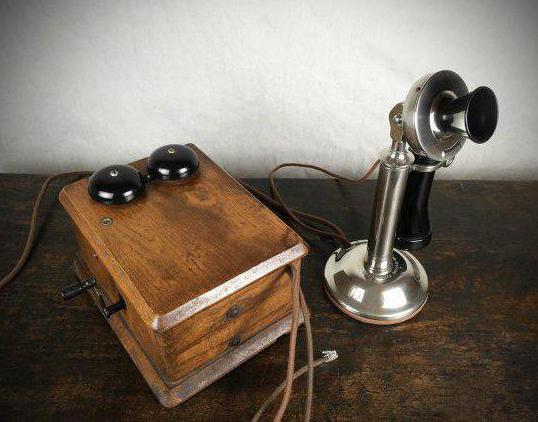
Впервые концепция телефона и его название (сочетание греческих слов «далеко» и «голос») были придуманы французским инженером-механиком Шарлем Бурселем в средине XIX в. Однако дальше теории он не пошел.
Первый аппарат, который можно считать телефоном в привычном для нас смысле, был изобретен в 1860 г. американцем Антонио Меуччи. Будучи пионером в этой сфере, Меуччи попытался запатентовать свое изобретение, но его опередил Александр Белл, который до 2002 г. считался конструктором первого телефонного аппарата. Будучи не только отличным изобретателем, но и великолепным бизнесменом, Белл сумел сделать состояние на телефоне. Многие годы он был лидером в данной сфере. Это достигалось не только за счет оригинальных идей самого ученого, но и за счет того, что его компания успешно скупала и внедряла в жизнь идеи и патенты других.
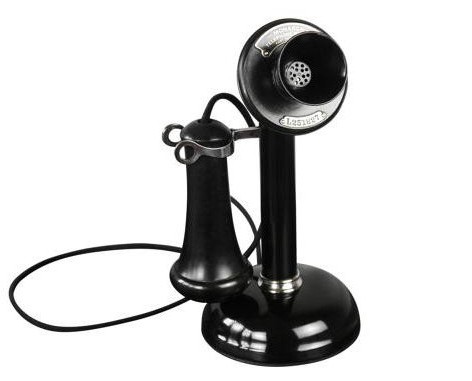
Первые телефонные аппараты были связаны непосредственно друг с другом. Из-за этого абоненты не могли звонить больше никому, что было весьма непрактично. В дальнейшем все устройства стали соединять с центральной станцией, в которой телефонистки распределяли звонки по номерам. Через время эта система стала автоматизированной.
Изобретение телефонов с дисковым набором
Появлением дискового аппарата мир обязан паранойе гробовщика из Канзас-Сити по имени Алмон Строуджер. Во время очередного кризиса он решил, что уменьшение количества его клиентуры связано с тем, что подкупленная телефонистка соединяет всех звонящих в контору Строуджера с его конкурентами. Прав он был или нет, история умалчивает, однако, чтобы обезопасить себя, гробовщик начал искать способ звонить без участия посредников.
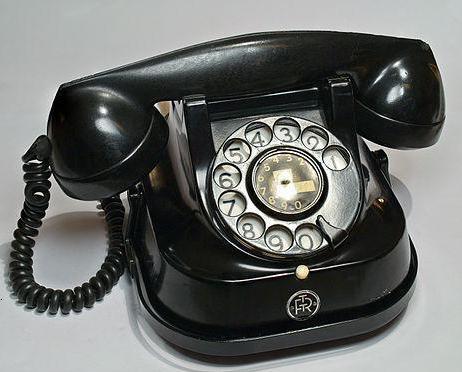
После шести лет работы над этим проектом, в 1897 г. компания Алмона Строуджера представила миру первый действующий дисковый телефон. Успех его изобретения был колоссален, и вскоре компания гробовщика стала серьезным конкурентом фирме Белла. Однако Строуджер к тому времени охладел к своей идее. Выгодно продав свои патенты, он удалился на покой.
Первые модели дискового телефона не имели отверстий для пальцев. Вместо них на аппарате присутствовали специальные зубцы. Лишь с 1902 г. появились привычные отверстия, и на тот момент они занимали почти всю окружность диска.
В дальнейшем компания Александра Белла перекупила патенты Строуджера и сама стала выпускать аппараты нового образца.
Появление дискового телефона в СССР
В Советском Союзе первые устройства с дисковым набором номера были внедрены по приказу В.И. Ленина в 1918 г. в Кремле. Они были частью правительственной засекреченной системы связи и назывались «вертушками». Этот термин и по сей день используется в значении «телефон начальника».
Вплоть до 1968 г. в СССР номера абонентов были гибридными, по этой причине на старых дисковых телефонах были обозначены не только десять цифр (0-9), но и буквы (А, Б, В, Г, Д, Е, Ж, И, К, Л).
На протяжении всего периода существования Советского Союза аппараты для связи всегда были дефицитом, впрочем, как и получение собственного абонентского номера.
В начале восьмидесятых приборы с дисковым набором постепенно стали вытесняться кнопочными аналогами. Чаще всего они были импортного производства.
В девяностые на просторы бывшего СССР хлынула лавина кнопочных телефонных аппаратов из Китая, которые были более простыми и удобными, нежели их дисковые собратья. На протяжении десятилетия последние были практически полностью вытеснены из употребления. А с приходом мобильной и CDMA связи стационарная телефония вообще стала сдавать свои позиции.
Что такое импульсный набор и чем он отличается от тонального
Главным отличием дискового телефона от кнопочного был механический способ набора номера – импульсный. Его суть в том, что каждая из цифр передается на АТС с помощью последовательного замыкания/размыкания телефонной линии – импульсов. Их число соответствует выбранной на диске цифре. Чтобы количество импульсов одного числа отделять от другого, между ними оставлялись более длительные паузы. Данный принцип напоминает отстукивание азбуки Морзе.

В кнопочных стационарных и мобильных телефонах все намного проще, для связи здесь используются тоновые сигналы разной частоты для каждой цифры.
Кнопочный или дисковый набор: что быстрее
Помимо тонового сигнала, дисковый телефон уступает кнопочному и в скорости связи с абонентом.
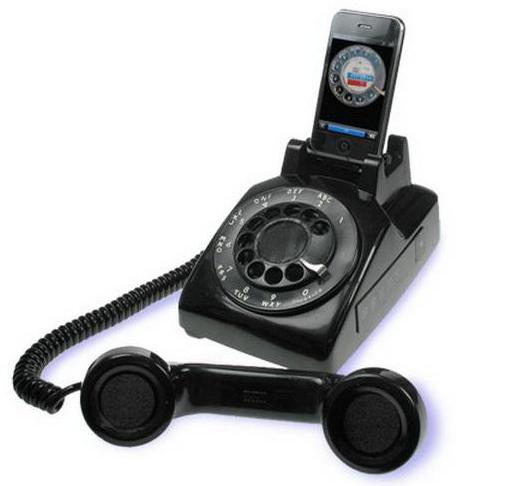
Дело в том, что в аппарате с клавишами нужный номер набирается в считаные секунды простым нажатием кнопок. В случае с дисковым телефоном нужно больше времени. Дело в том, что для набора каждой из цифр приходится крутить диск до упора и ждать, пока он вернется в начальную позицию.
Современный аналог
Хотя сегодня аппараты с дисковым набором номера остались лишь в отдельных государственных организациях (не имеющих средств на их замену), а также у стариков, в последние годы они снова начинают пользоваться популярностью. Но не из-за их функциональных особенностей (в этой категории они уже давно морально устарели), а из-за пропагандируемой любви к старинным вещам.
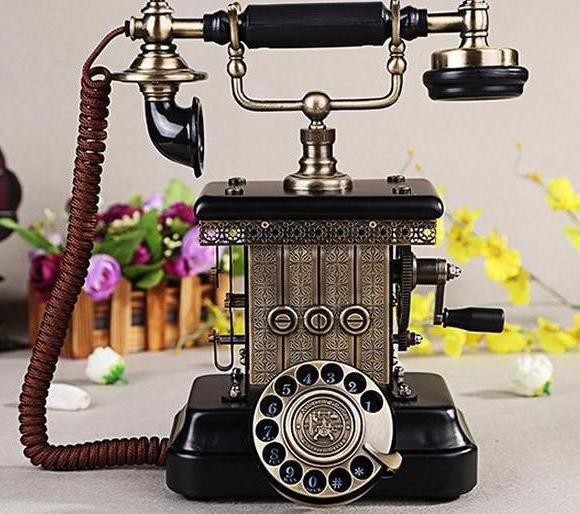
Подчиняясь современным веяниям, многие компании сегодня возобновили производство дисковых ретро-телефонов. Также существует целая линейка аксессуаров с дисковым устройством для смартфонов, а также программы, имитирующие это приспособление.
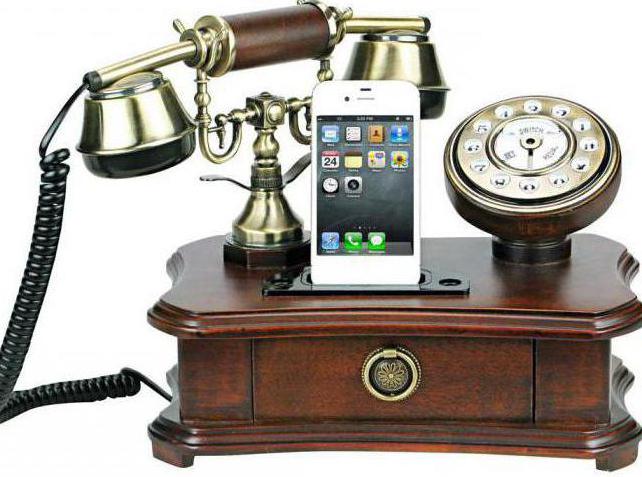
Стоит отметить, что данная востребованность – это всего лишь дань моде и не более, поскольку кнопочный аппарат все равно по всем параметрам превосходит дисковый телефон.

Для советского человека телефон имел особое значение: даже в середине 80-х в столице хватало квартир без проведенных в них линий. В коммуналках стоял один аппарат на всех, в поселках в 20 км от Москвы телефоны были редкостью, что уж говорить про остальную страну.
И даже при наличии телефона всегда велики были шансы не дозвониться: не застать человека дома или нарваться на наглухо занятую линию, потому что кто-то на том конце заболтался или плохо положил трубку. А уж междугородные звонки и вовсе были приключением.
Межгород надо было заказывать к определенному времени, а телефонистки имели возможность слушать разговор и часто не стеснялись это делать. Впрочем, отсутствие конфиденциальности разговоров подразумевалось всегда. То, что вашу линию может прослушивать товарищ майор, причем без всякого на то ордера, советский человек принимал как данность.
А путаница, когда к беседе внезапно подключалась другая линия («Ой, кто это? Повесьте немедленно трубку!» — «Сами повесьте!»), вообще была обычным делом.
Словом, телефонный аппарат в СССР был окутан ореолом мистики, романтики и непредсказуемости. К тому же вид этих устройств почти всегда был неплох — как и все остальные, советские дизайнеры тоже питали к телефонам теплые чувства. А из какого материала делали аппараты в 30-х — 50-х годах!
Бакелит, он же карболит, был тяжелым, ударопрочным и твердым, то есть устойчивым к царапинам. Трубкой такого телефона запросто можно было оглушить оппонента. В общем, нам немного не хватает этих старых советских телефонов.
Хотя есть умельцы, которые подключают к старым аппаратам GSM-модуль, что позволяет снова ими пользоваться без подключения проводных линий. Хотя носить их с собой, пожалуй, было бы немного неудобно.
Вернёмся к теме статьи:

Телефон ленинградской фабрики «Красная заря», 1930-е годы. Вещь одновременно массивная и изящная.
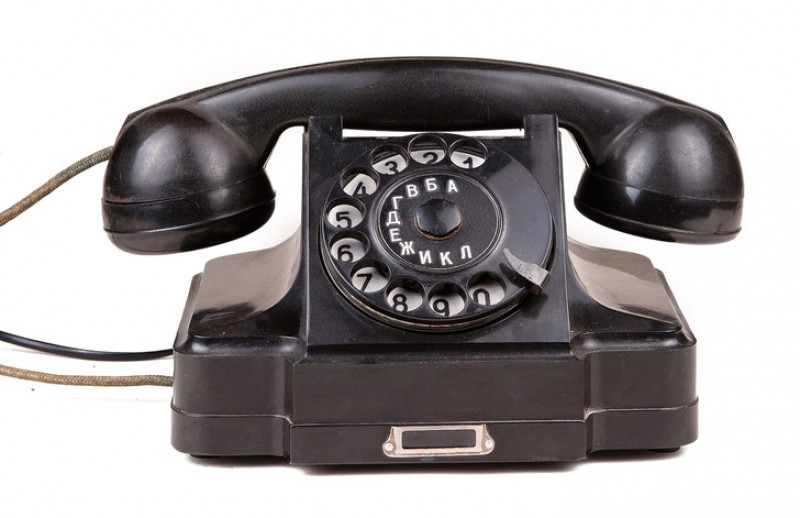
Аппарат ТАН-6м производства Пермского телефонного завода. Конец 1950-х. Буквы на внутренней части диска нанесены светящейся краской.

VEF БАГТА-50 выпускали на Рижском государственном электротехническом заводе «ВЭФ» в Латвийской ССР с 1950 по 1965 год. Это был, наверное, самый массовый аппарат в стране в те годы.
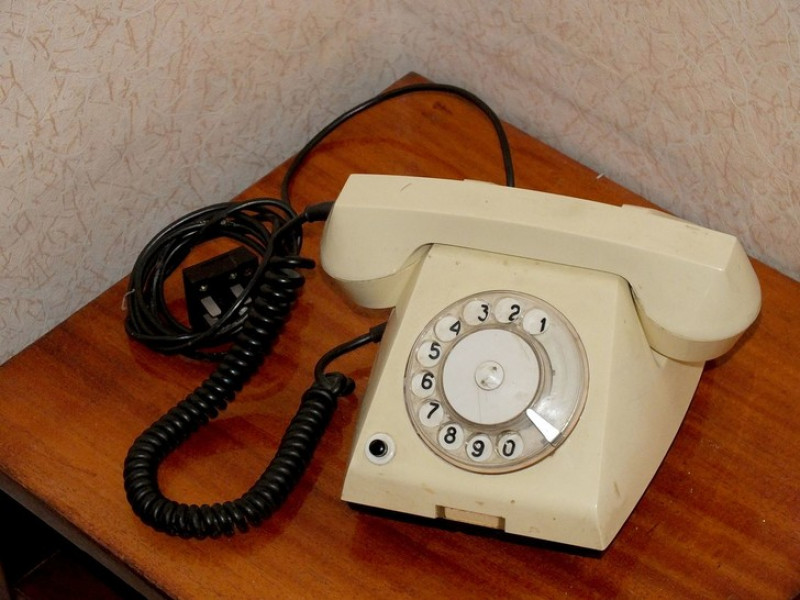
VEF ТА-68, самый распространенный в СССР аппарат в 1970-е — 1980-е годы.

VEF ТА-68 без номеронабирателя. Такой использовали в заоблачно высоких кабинетах. При снятии трубки происходило соединение с телефонисткой, которой можно было просто сказать: «С директором главка меня соедините, пожалуйста», не напрягая мозг запоминанием номеров и обходясь без записных книжек.
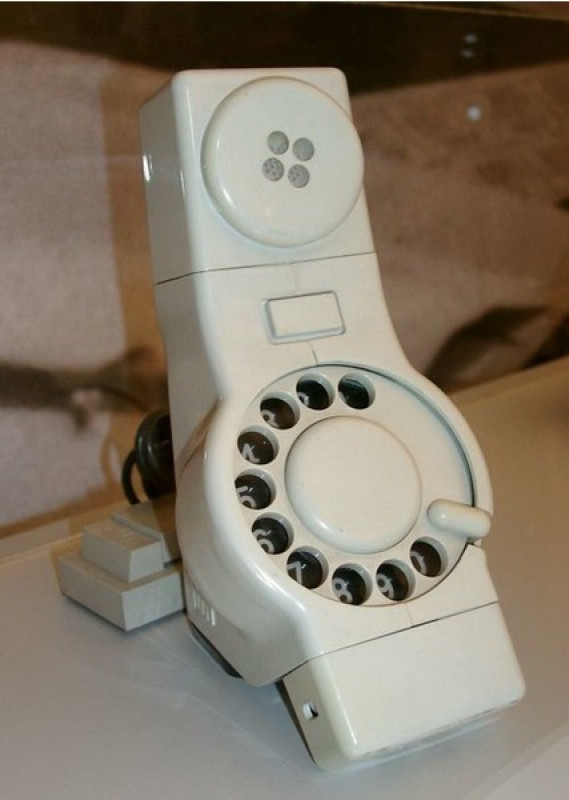
ТА-1158 «Тон» Пермского телефонного завода, 1980-е годы. Одна из последних разработок предприятия, сувенирно-подарочная вещь. Не очень изящная, но оригинальная.

Индустриальный телефон ТА-1321 (Пермский телефонный завод). Был рекомендован к применению в металлургических цехах и на горнодобывающих предприятиях, в том числе на шахтах, невзрывоопасных по пыли и газу.

Продукция Польской социалистической республики: Jaskier-74.
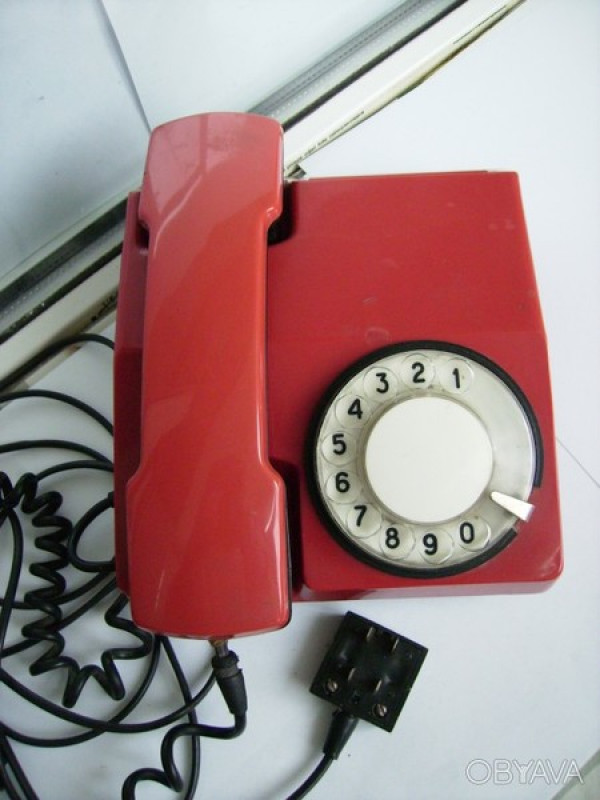
«Спектр» ТА-1128, Пермский телефонный завод, 1980-е. Вроде бы только компоновка изменена, а вид совсем другой, заграничный.

Чешское изделие с космическим дизайном — Tesla Stropkov DS2300. Редкая и модная вещь.

Детский телефон был чудом техники и заветной мечтой многих. Помните рассказ Николая Носова «Телефон»? А нынешние дети, скорее всего, уже не поймут, о чем там вообще речь.
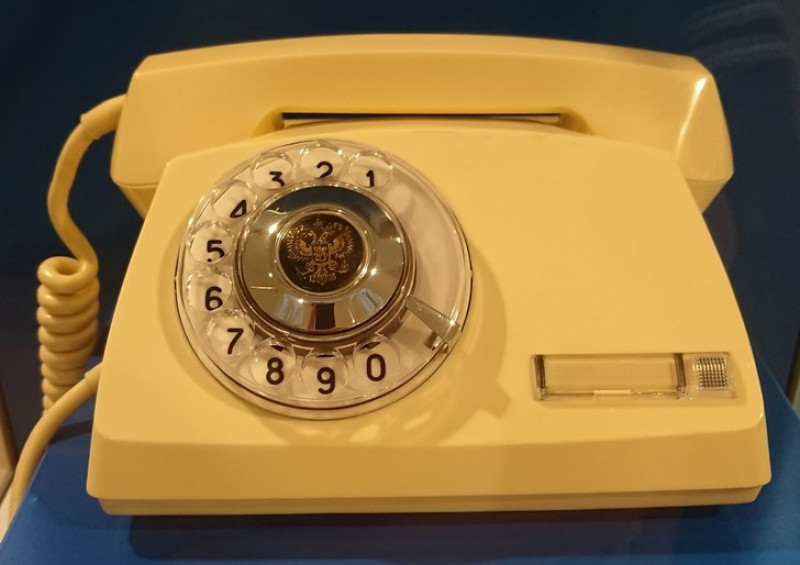
VEF СТА-2, «вертушка» — аппарат для правительственной секретной связи. Устанавливали их только специально обученные офицеры. А название «вертушка» прижилось, когда в Кремле появились первые в стране телефоны с дисковым набором.
См.также:
Музей Истории Телефона
Винтажные девушки и… телефон!
Как появилось слово «Алло», и что говорят, принимая телефонный звонок в других странах
Гробовщик-телефонист Элмон Строуджер
Мобильная система «Алтай»
В Телеграм!
На сегодняшний день мы имеем довольно большой рынок смартфонов. И в принципе все они одинаковые. Просто взгляните на этот дизайн любого смартфона — экран, занимающий всю переднюю панель, а сзади камера с дактилоскопическим сенсором. Никаких интересных форм-факторов практически нет. И если вы думаете, что такие инновации, как складной смартфон или смартфон-слайдер — это вершина технической и дизайнерской мысли, то с этим можно поспорить.
Давайте мы с вами вернемся в далекое прошлое (относительно, конечно же). В эпоху, когда мир смартфонов не знал, а весь мобильный рынок был полностью заполонён GSM-телефонами. В то золотое время было прекрасно жить, так как телефонов было столько, что сейчас бы позавидовали все смартфоны, выпущенные за последние 5 лет. Тут вам и моноблоки, и слайдеры, и раскладушки, и поворотные экраны, и слайдеры в обе стороны. А уж какое не паханное поле для работы было у дизайнеров телефонов — просто не передать словами. Ни один телефон не был похож на своего конкурента, или даже собрата по бренду.
И в то время миром правила компания Nokia, которая сейчас на мобильном рынке показывает весьма посредственные результаты. Дизайнерам телефонов была дана такая воля в самовыражении, что это можно было назвать даже сумасшествием. У той же компании Nokia были настолько необычные и красивые телефоны, что порой не верилось, что это не концепт, а вполне себе настоящий телефон, который можно пойти и купить в магазине.
И сейчас мы вспомним один из самых необычных телефонов, а именно Nokia 7280. Он еще получил прозвище «Lipstick Phone » и в плане дизайна — это был действительно шедевр. Габариты его были настолько необычны и малы, что его сравнивали с губной помадой (отсюда и название). По факту он был и разработан для того, чтобы выглядеть как губная помада, и предназначался для использования прекрасной половиной человечества. И в этом телефоне столько мелких элементов, которые в общем итоге создавали прекрасную картину. Например когда экран не был включен, то его можно было использовать в качестве зеркала.
Корпус телефона — это сочетание металла, кожи, пластика и даже ткани. Логотип Nokia был нанесен на тряпичный элемент, который был сделан в виде петельки, подобной той, что мы видим на нашей одежде. А еще отделка кожей — это тоже стоило отдельного внимания. То есть весь телефон был сделан для того, чтобы показать насколько его владелец уникален и необычен. Но из-за дизайна сильно пострадала функциональность, так как в столь маленький корпус попросту невозможно установить экран достаточного размера и хоть какую-нибудь клавиатуру. Поэтому приходилось довольствоваться миниатюрным дисплеем, а вместо кнопок и цифр имелось лишь кнопка прокрутки (принцип работы схож с крутилкой на iPod). Представили насколько удобно такое техническое решение? А как бы это было прекрасно в наш век высокоскоростного интернета и онлайн-общения. Для активного диалога в мессенджере пришлось бы так быстро и долго пользоваться прокруткой, что скорее всего телефон бы стёрся.
В то время наличие камеры в телефоне было далеко не обязательно. Однако Nokia 7280 был оснащен скромненьким VGA модулем, который включался при сдвигании корпуса. Сам корпус имел черно-белую цветовую гамму с замысловатыми линиями. Но при сдвижении корпуса для доступа к камере — перед глазами представали ярко-красные вставки. Поэтому Nokia 7280 и был губной помадой, кстати говоря. Открытие и закрытие корпуса к тому же позволяло принимать и отклонять входящие вызовы.
И даже учитывая необычный узкий корпус и малые размеры, телефон всё-таки имел весь набор крутых на тот момент функций. Там был и Bluetooth, и камера, и даже GPRS интернет. Это сейчас нам подавай как минимум 4G подключение, да желательно, чтобы 50 Мбитсек, а скоро еще и 5G вдохнём полной грудью с гигабитными скоростями. А тогда был очень дорогой, медленный, и относительно бесполезный GPRS с безумными ценниками за трафик.
В телефоне так же можно было
слушать музыку, делать и делиться фотографиями. А за автономность всего этого набора отвечал аккумулятор ёмкостью 700 мАч.
Крутость данного телефона заключалась еще и в стоимости. На тот момент Nokia 7280 оценивался в 600 евро! А это, знаете ли, и по нынешним меркам дорого. А в начале 2000-х редко кто вообще задумывался о таких тратах на «аксессуары». На самом деле можно даже завести целую рубрику, где мы будем вспоминать какие-нибудь интересные и красивые телефоны из прошлого. Такого контента хватит на несколько лет ежедневных воспоминаний, так как красивых и необычных телефонов было столько, что их даже сложно сосчитать. А сейчас, когда производители смартфонов представляют очередную «инновацию», знайте, что всё это было уже лет 10-15 назад, но только мощностей в телефонах не было, и экраны были гораздо меньше.
Домашние телефоны нашей юности. Найди свой
Сколько же приятных воспоминаний связано с этими маленькими аппаратами. Недавно в комиссионке увидел наш первый домашний телефон-не удержался, попросил девушку показать аппарат. Минут десять я вертел его в руках-прям бальзам души.
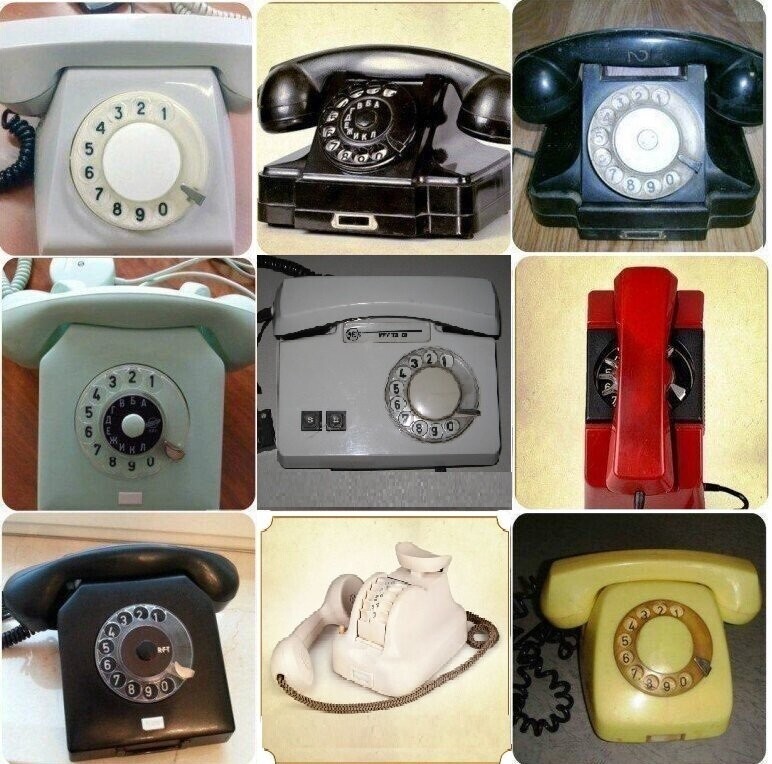
В СССР выбор моделей телефонов был не такой большой, однако за многие годы у населения накопился достаточный ассортимент. Были массовые модели из серии «классика» и были очень редкие аппараты, но о них позже.
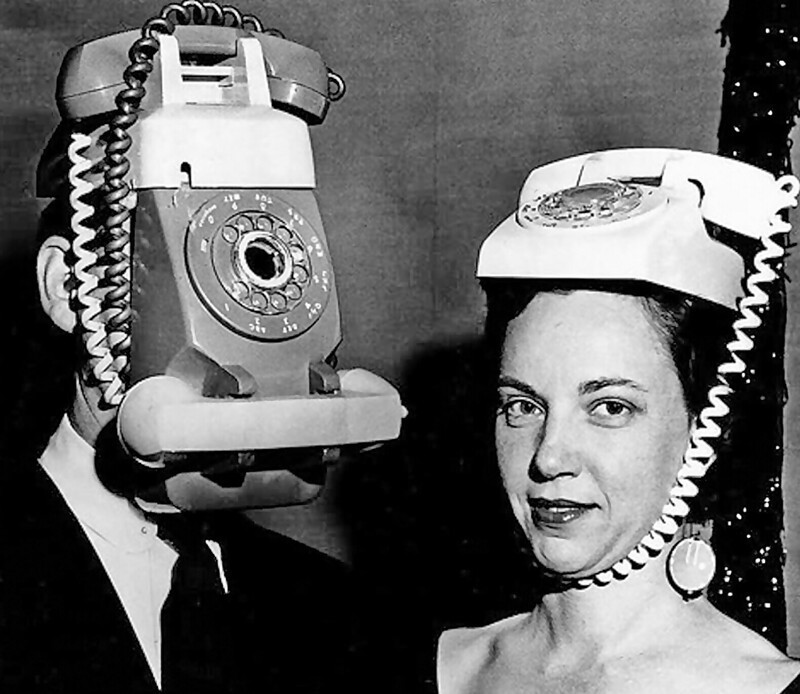
Попробуйте угадать самый популярный телефонный аппарат СССР. Угадали? Тогда перелистните на следующий кадр.
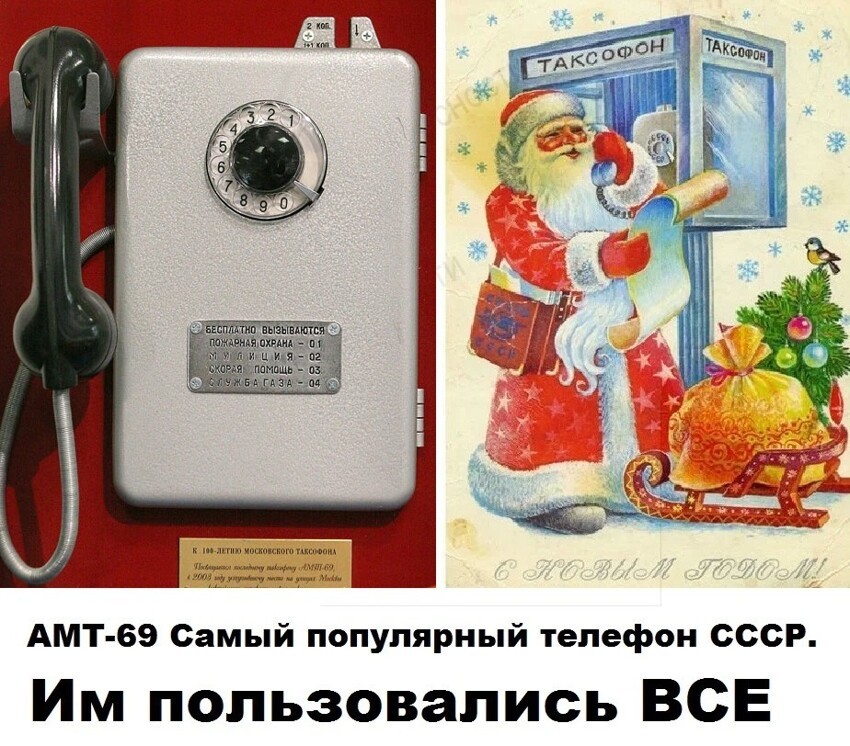
Самый старый телефонный аппарат, который я помню, был у нас на вахте техникума. За день сотни людей пользовались им и тем не менее он без поломок отработал два десятка лет-умели делать качественно и надежно:
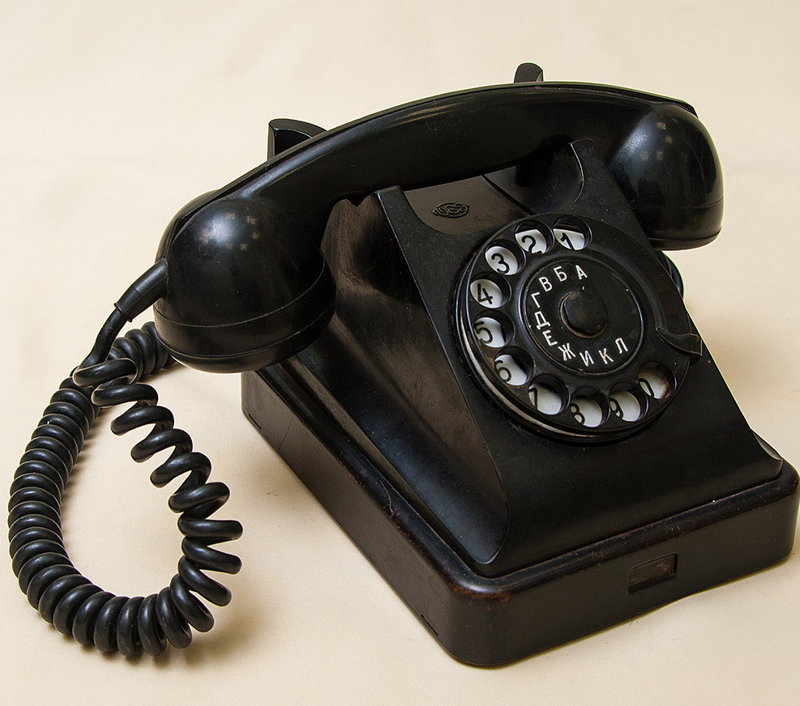
Телефонный аппарат БАГТА-50 (ВЭФ)
На диске номеронабирателя были еще буквы полустертые, которые отменили в 1968 году
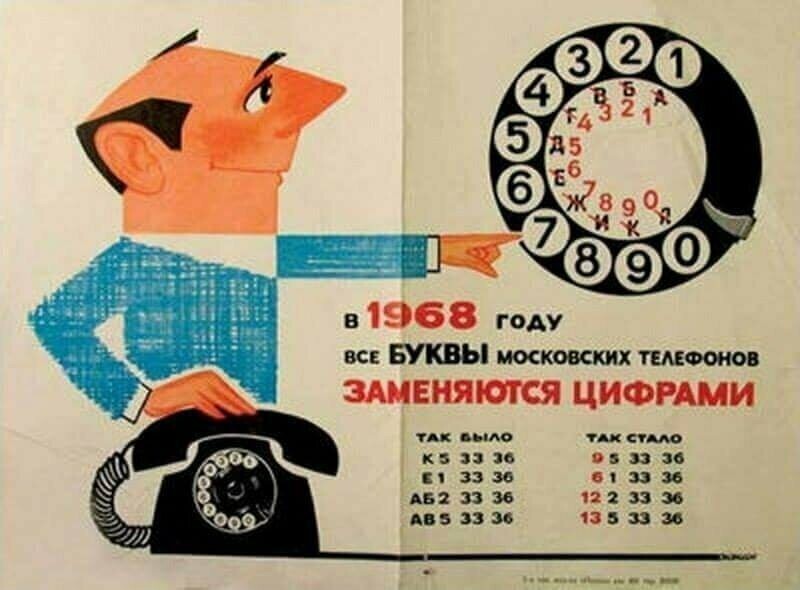
Из старых телефонов еще попадались настенные аппараты-их часто использовали в коммуналках и общежитиях
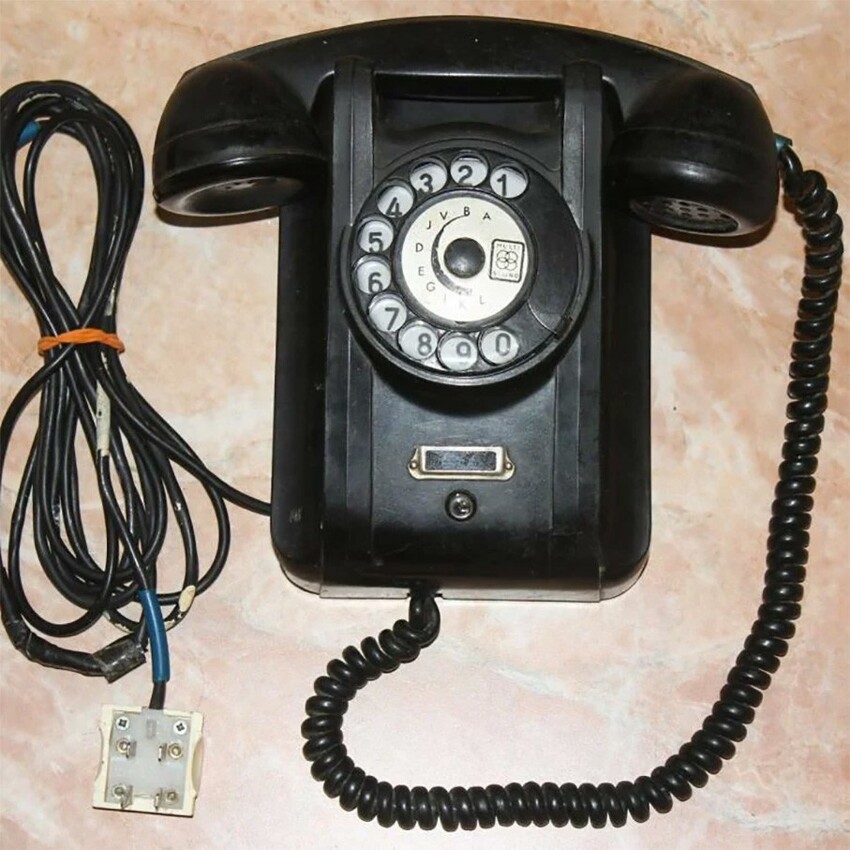
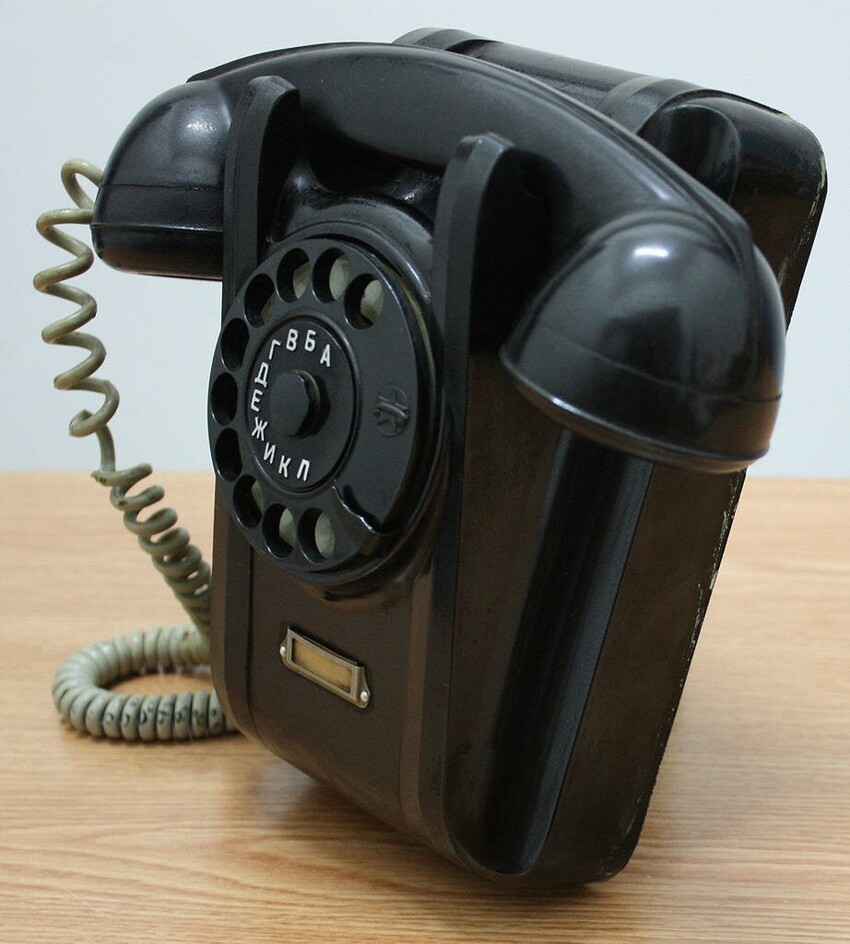
Ну а теперь о самых массовых телефонных аппаратах СССР:
ТА-68 был любимцем не только в квартирах советских граждан, но и многих госучреждений.
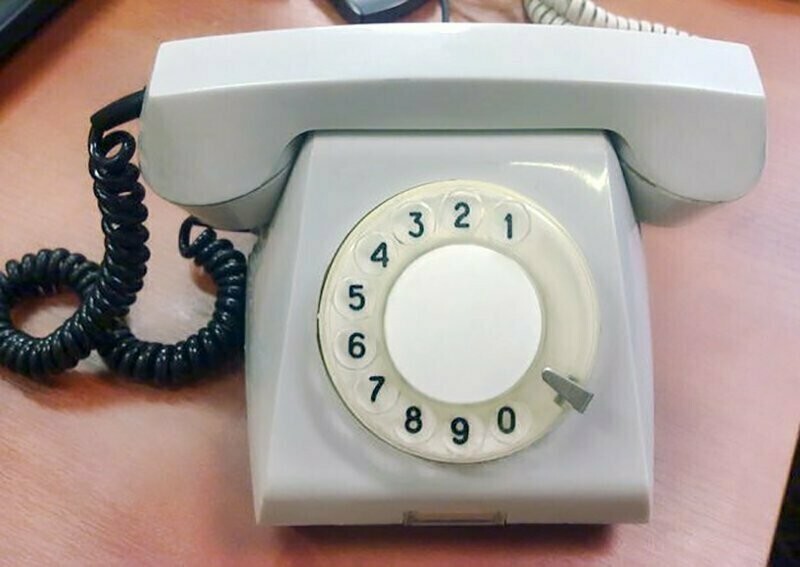
Не сильно от него отличался ТАН-70

Так же были популярны ТА-72
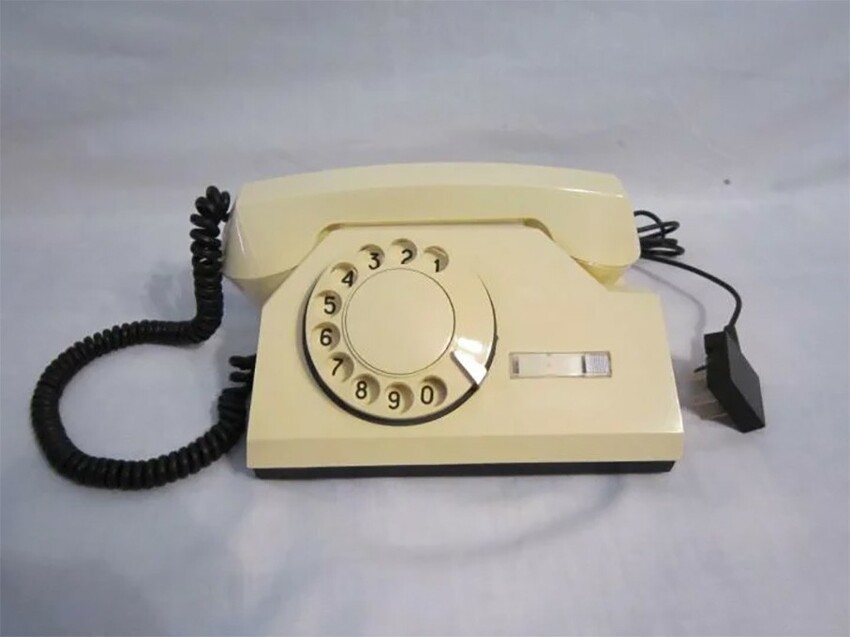
Очень симпатичной была модель ТА 3100, но почему то встречалась очень редко
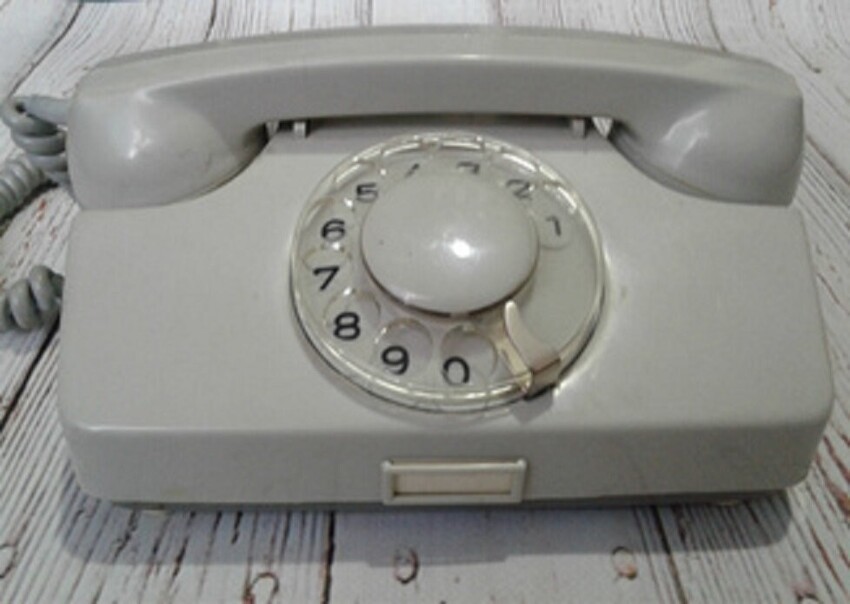
Позже начали выпускать серию «Спектр». У них номеронабиратели были другой конструкции и диск вращался гораздо приятнее.
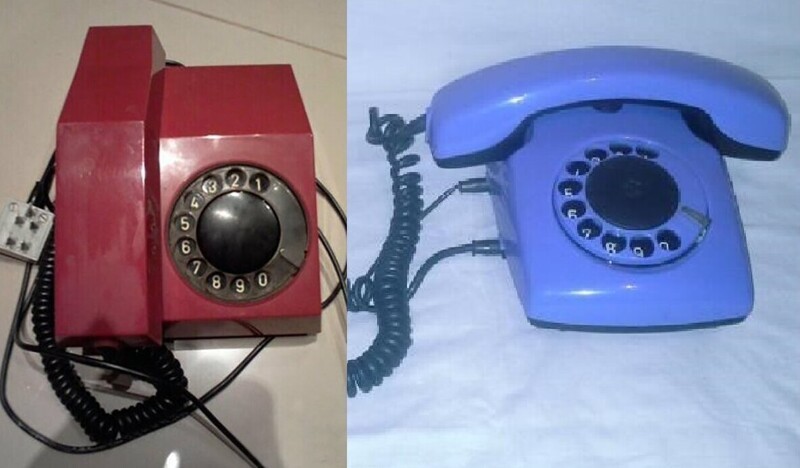
Нельзя обойти вниманием ВЭФ ТА Д. Там был выдвижной блокнотик. В процессе разговора невольно нажимаешь на кнопку и панелька выезжает, но не помню, чтобы я там хоть раз видел записи….
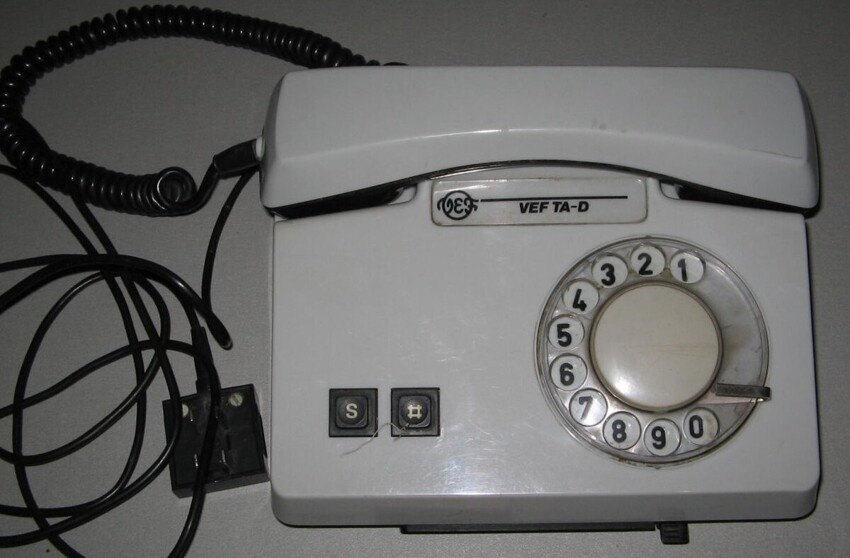
Для модников выпускали аппараты серии «Ретро», с оригинальным оформлением
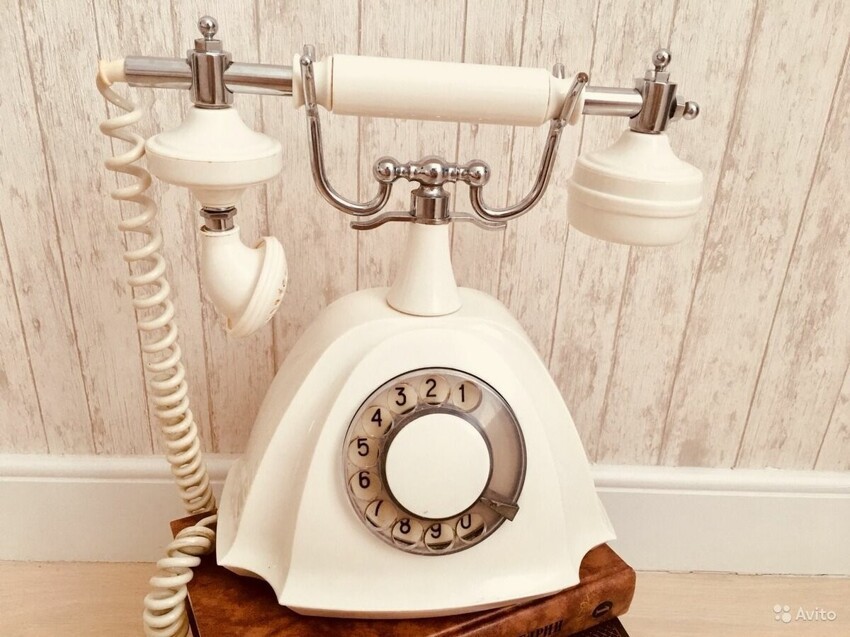
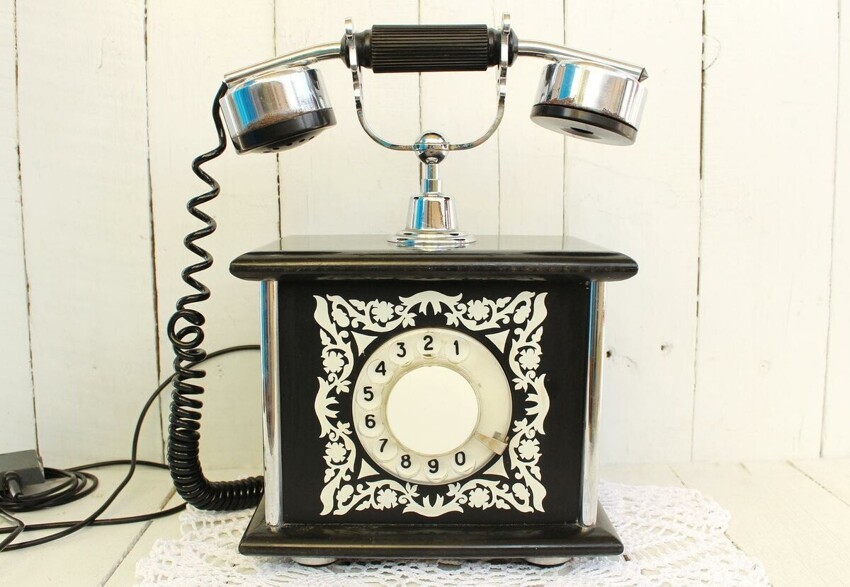
В СССР производство телефонных аппаратов было сконцентрировано на двух крупных заводах: Пермский телефонный завод и ВЭФ. Кроме внутреннего рынка, они поставляли продукцию еще и в другие соцстраны. В СССР так же завозили телефонные аппараты производства предприятий соцстран.
Польша поставляла телефоны серии «Тюльпан»
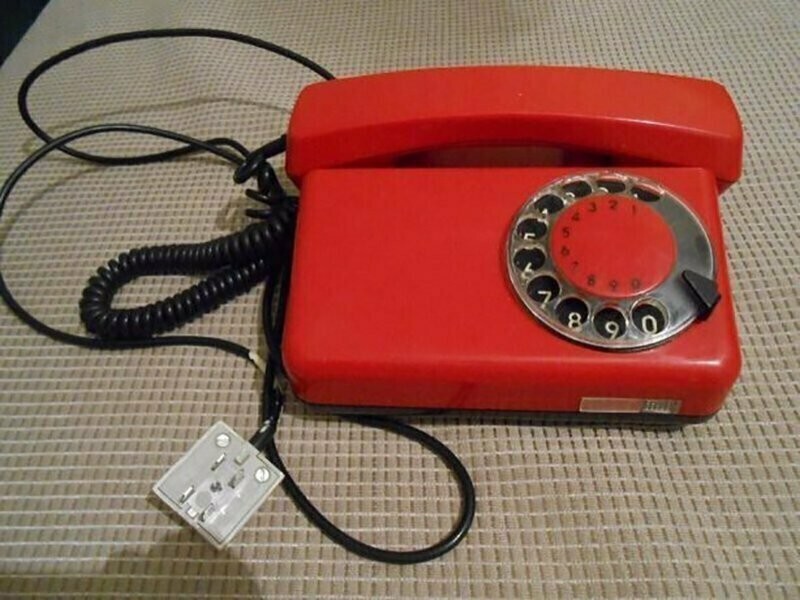
и серии «Братек», а ВЭФ выпускал точно такой аппарат «Марта»)
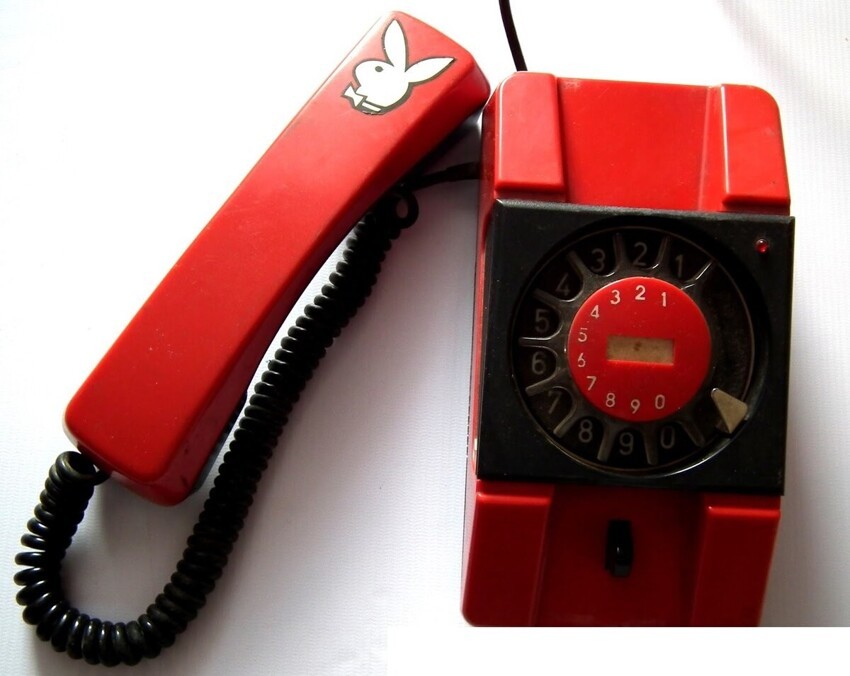
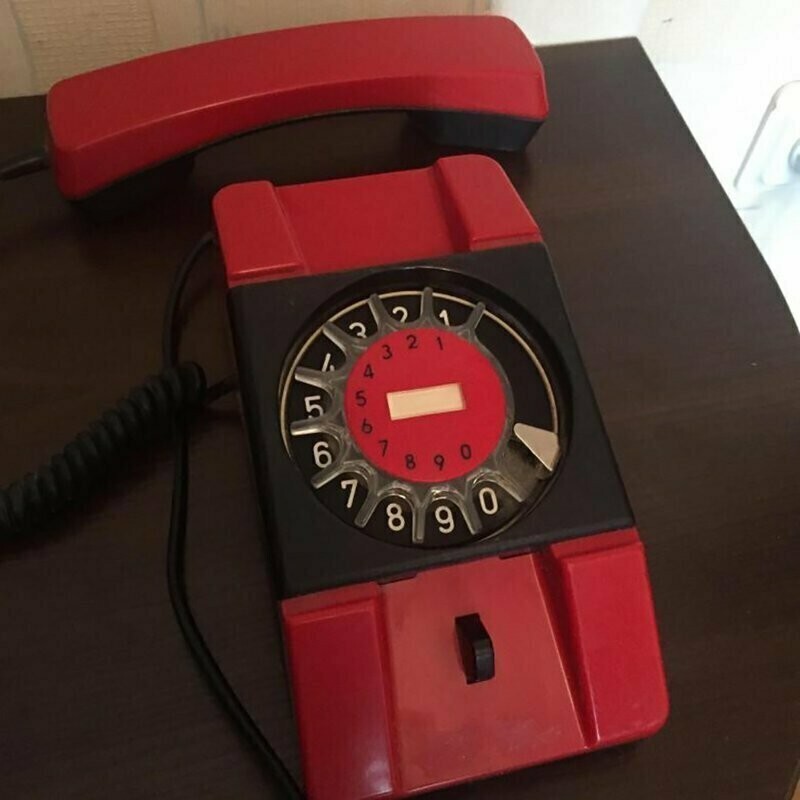
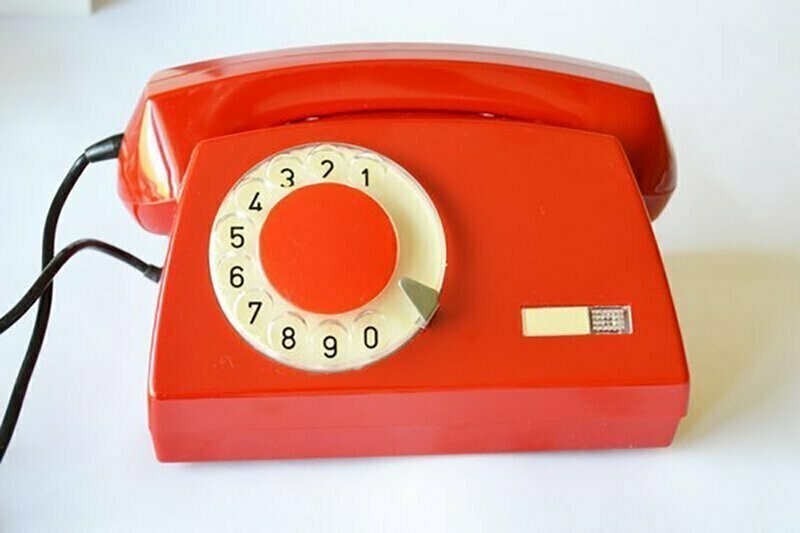
Болгария поставляла аппараты серии «Белоградчик»
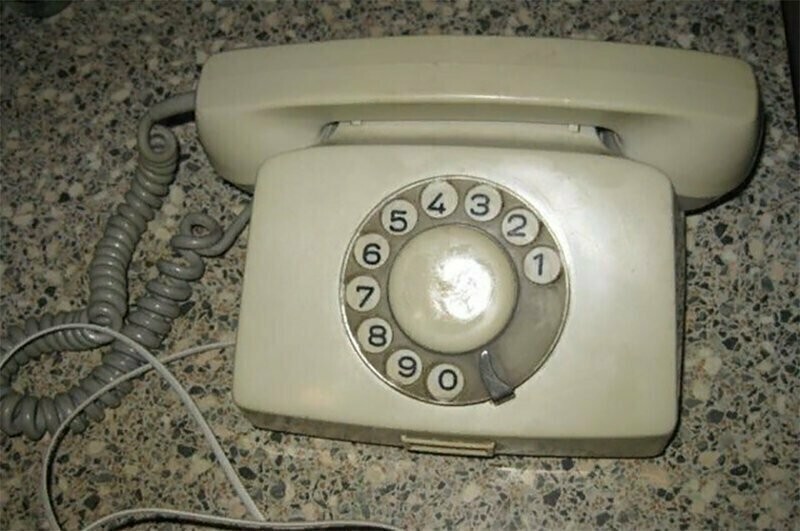
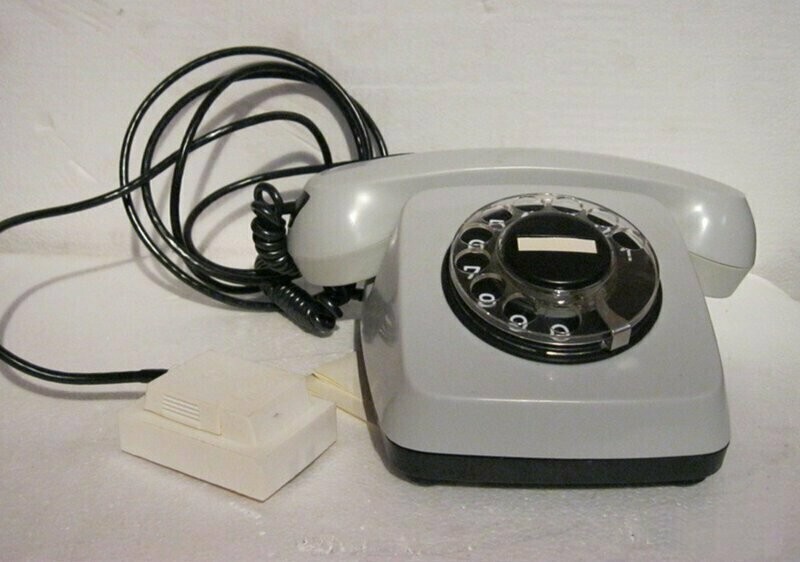
Венгрия поставляла модели серии «СВ»
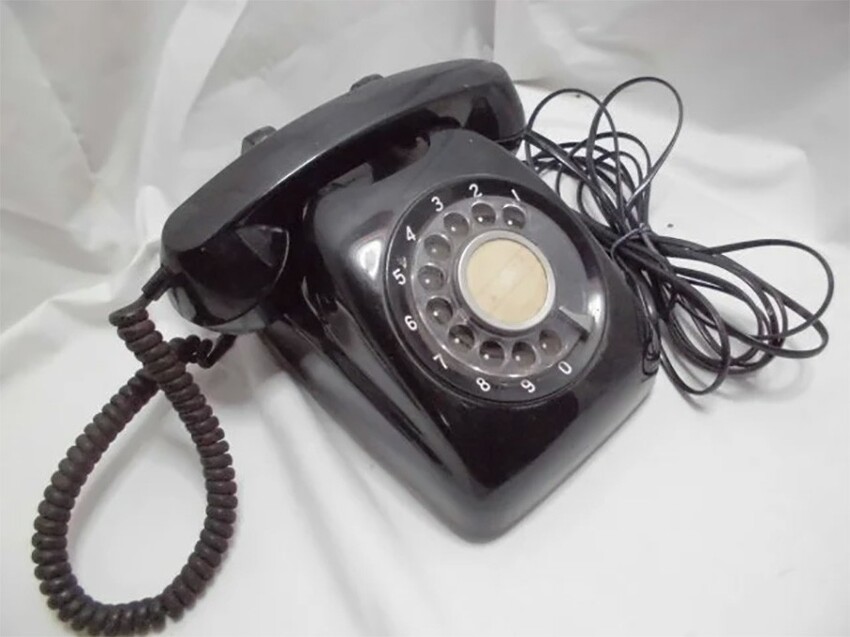
ГДР поставляла аппараты моделей W58 (61,63,66)
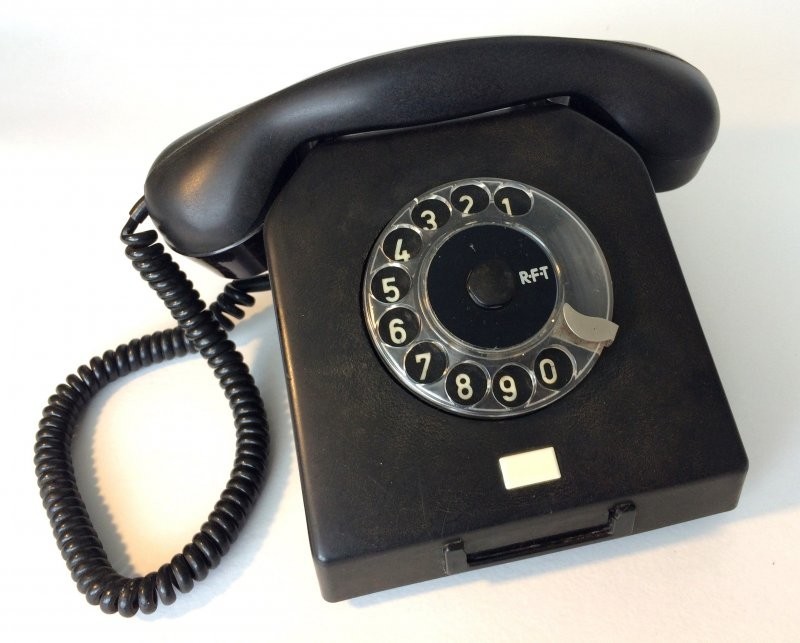
За Чехословацкими аппаратами «TESLA» шла настоящая охота
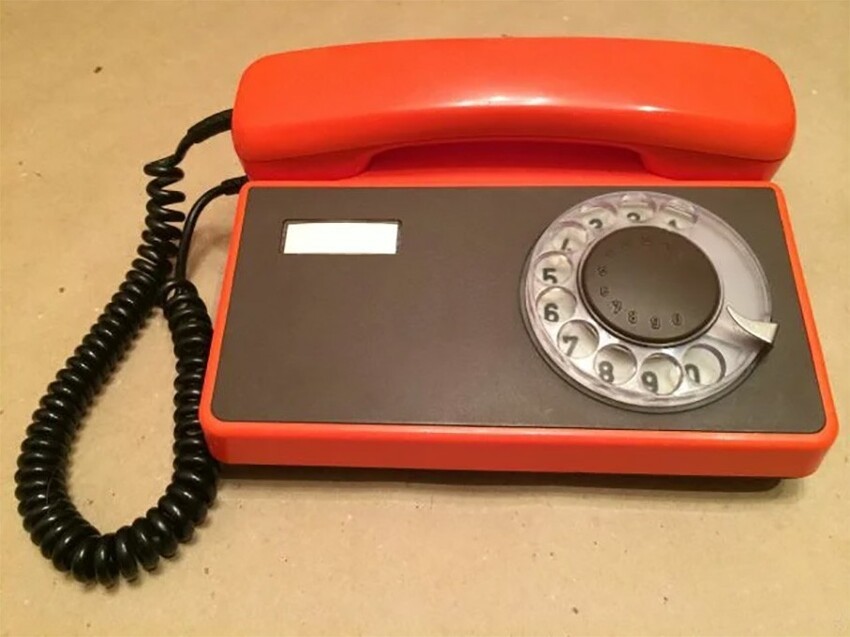
Не забывали и о детях-для них выпускали комплекты телефонов
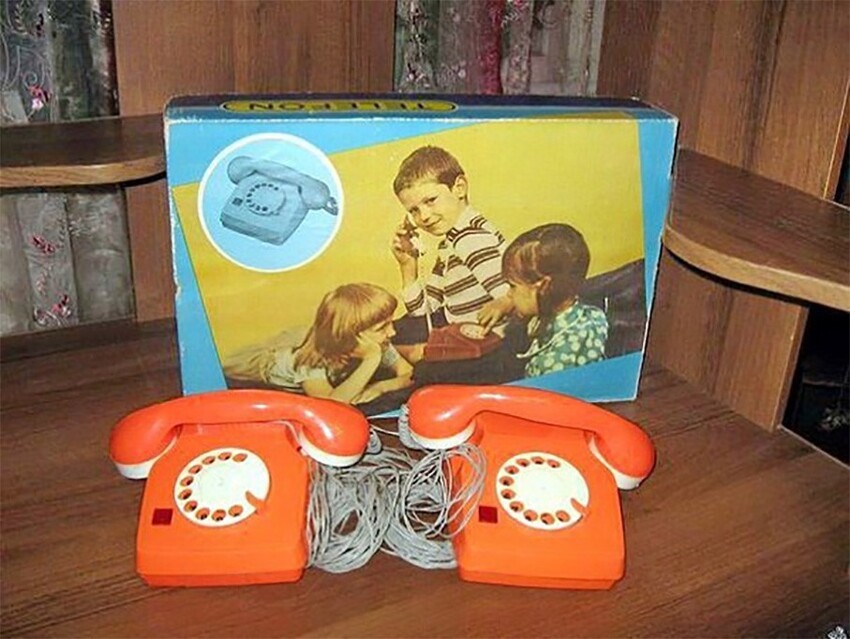
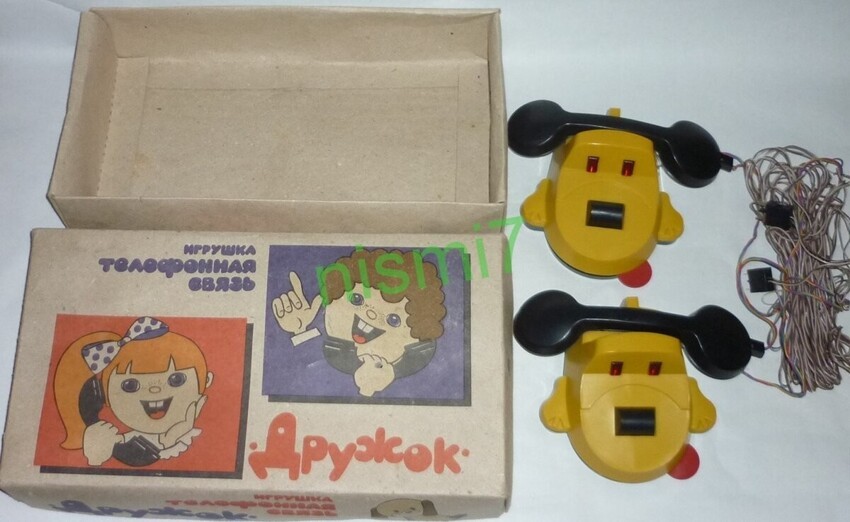
За всю жизнь видел множество различных телефонных аппаратов, но только недавно узнал о существовании телефонов не с дисковым номеронабирателем, а с роторным!
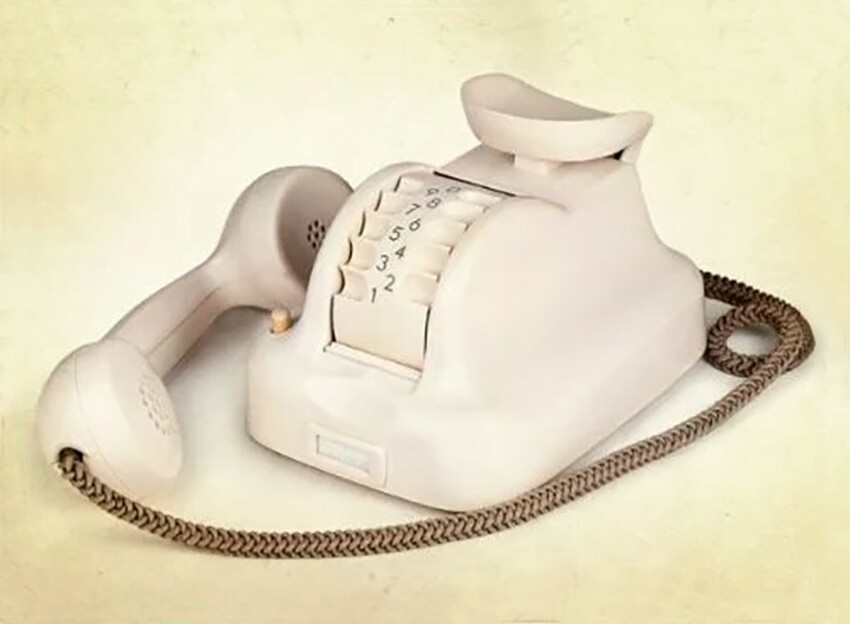
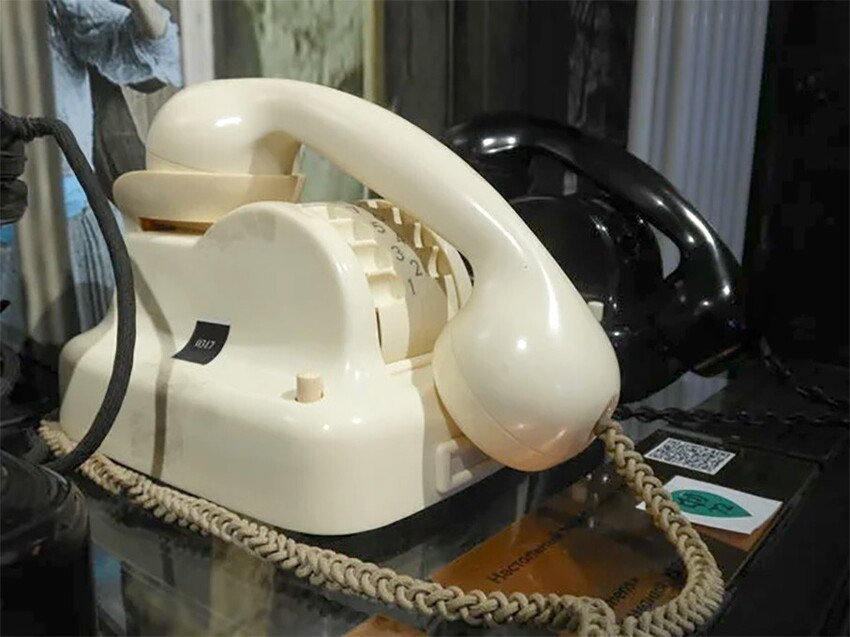
Потом пришла эра кнопочных номеронабирателей ……
Источник:
Ссылки по теме:
От автора: Сколько же приятных воспоминаний связано с этими маленькими аппаратами. Недавно в комиссионке увидел наш первый домашний телефон-не удержался, попросил девушку показать аппарат. Минут десять я вертел его в руках-прям бальзам души.
В СССР выбор моделей телефонов был не такой большой, однако за многие годы у населения накопился достаточный ассортимент. Были массовые модели из серии «классика» и были очень редкие аппараты, но о них позже.
Самый старый телефонный аппарат, который я помню, был у нас на вахте техникума. За день сотни людей пользовались им и тем не менее он без поломок отработал два десятка лет — умели делать качественно и надежно:
Телефонный аппарат БАГТА-50 (ВЭФ)
На диске номеронабирателя были еще буквы полустертые, которые отменили в 1968 году
Из старых телефонов еще попадались настенные аппараты-их часто использовали в коммуналках и общежитиях
Ну а теперь о самых массовых телефонных аппаратах СССР:
ТА-68 был любимцем не только в квартирах советских граждан, но и многих госучреждений.
Не сильно от него отличался ТАН-70
Так же были популярны ТА-72
Очень симпатичной была модель ТА 3100, но почему то встречалась очень редко
Позже начали выпускать серию «Спектр». У них номеронабиратели были другой конструкции и диск вращался гораздо приятнее.
Нельзя обойти вниманием ВЭФ ТА Д. Там был выдвижной блокнотик. В процессе разговора невольно нажимаешь на кнопку и панелька выезжает, но не помню, чтобы я там хоть раз видел записи…
Для модников выпускали аппараты серии «Ретро», с оригинальным оформлением
В СССР производство телефонных аппаратов было сконцентрировано на двух крупных заводах: Пермский телефонный завод и ВЭФ. Кроме внутреннего рынка, они поставляли продукцию еще и в другие соцстраны. В СССР так же завозили телефонные аппараты производства предприятий соцстран.
Польша поставляла телефоны серии «Тюльпан»
и серии «Братек», а ВЭФ выпускал точно такой аппарат «Марта»)
Серия «Астра»
Болгария поставляла аппараты серии «Белоградчик»
Венгрия поставляла модели серии «СВ»
ГДР поставляла аппараты моделей W58 (61,63,66)
За Чехословацкими аппаратами «TESLA» шла настоящая охота
Не забывали и о детях — для них выпускали комплекты телефонов
Вроде всю жизнь работал в связи и видел множество различных телефонных аппаратов, но только недавно узнал о существовании телефонов не с дисковым номеронабирателем, а с роторным!
как Вам такое чудо?
Потом пришла эра кнопочных номеронабирателей…

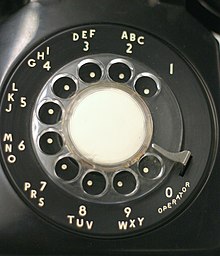
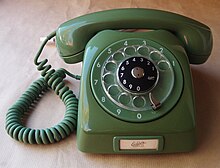

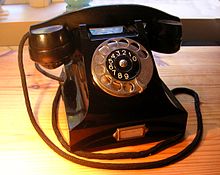


 И сейчас мы вспомним один из самых необычных телефонов, а именно Nokia 7280. Он еще получил прозвище «Lipstick Phone » и в плане дизайна — это был действительно шедевр. Габариты его были настолько необычны и малы, что его сравнивали с губной помадой (отсюда и название). По факту он был и разработан для того, чтобы выглядеть как губная помада, и предназначался для использования прекрасной половиной человечества. И в этом телефоне столько мелких элементов, которые в общем итоге создавали прекрасную картину. Например когда экран не был включен, то его можно было использовать в качестве зеркала.
И сейчас мы вспомним один из самых необычных телефонов, а именно Nokia 7280. Он еще получил прозвище «Lipstick Phone » и в плане дизайна — это был действительно шедевр. Габариты его были настолько необычны и малы, что его сравнивали с губной помадой (отсюда и название). По факту он был и разработан для того, чтобы выглядеть как губная помада, и предназначался для использования прекрасной половиной человечества. И в этом телефоне столько мелких элементов, которые в общем итоге создавали прекрасную картину. Например когда экран не был включен, то его можно было использовать в качестве зеркала. В то время наличие камеры в телефоне было далеко не обязательно. Однако Nokia 7280 был оснащен скромненьким VGA модулем, который включался при сдвигании корпуса. Сам корпус имел черно-белую цветовую гамму с замысловатыми линиями. Но при сдвижении корпуса для доступа к камере — перед глазами представали ярко-красные вставки. Поэтому Nokia 7280 и был губной помадой, кстати говоря. Открытие и закрытие корпуса к тому же позволяло принимать и отклонять входящие вызовы.
В то время наличие камеры в телефоне было далеко не обязательно. Однако Nokia 7280 был оснащен скромненьким VGA модулем, который включался при сдвигании корпуса. Сам корпус имел черно-белую цветовую гамму с замысловатыми линиями. Но при сдвижении корпуса для доступа к камере — перед глазами представали ярко-красные вставки. Поэтому Nokia 7280 и был губной помадой, кстати говоря. Открытие и закрытие корпуса к тому же позволяло принимать и отклонять входящие вызовы.































